Energy Transition Framework for Nearly Zero-Energy Ports: HRES Planning, Storage Integration, and Implementation Roadmap
Abstract
1. Introduction
2. State of the Art
2.1. Green Energy
2.2. Carbon Neutralization
2.3. Hybrid Renewable Energy Systems
2.4. Energy Storage Systems
2.5. Port Infrastructure
2.6. Nearly Zero-Energy Ports
2.7. Research Gaps
2.8. Novel Contribution of Our Work
3. Methodology
3.1. Baseline Assessment: Energy Demand and Infrastructure
3.2. Renewable Energy Potential Assessment
3.3. System Design and Optimization
3.4. Digital Shadow and Smart Technologies
3.5. Techno-Economic and Environmental Impact Analysis
3.5.1. Cost Simulation and Economic Comparison
3.5.2. Greenhouse Gas Emissions Assessment
3.6. Policy and Regulatory Compliance
3.7. Continuous Monitoring and Improvement
3.8. Summary of Methodological Framework
4. Discussion and Results
4.1. Baseline Assessment
4.2. Renewable Energy Potential Assessment
4.3. System Design and Optimization
| Parameter | Value |
|---|---|
| Power per module (kW) | 0.31 |
| Optimal operating temperature (°C) | 40 |
| Efficiency (%) | 19 |
| Lifetime (y) | 25 |
| Temperature power coefficient (%/°C) | −0.038 |
| Parameter | Value |
|---|---|
| Rated power (kW) | 54 |
| Rated wind speed (m/s) | 12 |
| Minimum sufficient wind speed (m/s) | 3 |
| Maximum wind speed (m/s) | 20 |
| Hub height (m) | 22.03 |
| Lifetime (y) | 25 |
| Efficiency (%) | 90 |
| Parameter | Value |
|---|---|
| System capacity per unit (kwh) | 3421 |
| Efficiency (%) | 86 |
| Cycles | ≥8000 |
| Rated voltage (V) | 3.2 |
| Charging current (A) | 150 |
| Discharging current (A) | 150 |
4.4. Digital Shadow and Smart Technologies
4.5. Techno-Economic and Environmental Impact Analysis
4.5.1. Cost Simulation and Economic Comparison
4.5.2. Greenhouse Gas Emissions Assessment
4.6. Policy and Regulatory Compliance
4.7. Continuous Monitoring and Improvement
5. Conclusions
Author Contributions
Funding
Institutional Review Board Statement
Informed Consent Statement
Data Availability Statement
Conflicts of Interest
Abbreviations
| CF | Carbon Footprint |
| EMS | Energy Management System |
| ESS | Energy Storage System |
| GA | Genetic Algorithm |
| GHG | Greenhouse Gas |
| HRES | Hybrid Renewable Energy System |
| IoT | Internet of Things |
| IRR | Internal Rate of Return |
| LAB | Lead–Acid Batteries |
| LCOE | Levelized Cost of Energy |
| NPV | Net Present Value |
| nZEP | nearly Zero-Energy Port |
| PP | Payback Period |
| PV | Photovoltaic Panels |
| RES | Renewable Energy System |
| ROI | Return on Investment |
| SoC | State of Charge |
| WT | Wind Turbine |
Appendix A
| Ref. | Focus Area | Year | Summary | Relevance to This Study | OUR Novel Contribution |
| [22] | Green Energy | 2006 | The study proposes and evaluates seven green energy strategies by introducing novel impact and sustainability ratios to assess their effectiveness using literature-based data. | Supports the pursuit of sustainability through structured evaluation of green energy adoption, aligning with the transition of port infrastructure to renewable and low-emission systems. | Applies the theoretical green energy impact metrics within a real-world infrastructure context, integrating sectoral analysis with simulation-based design, Internet of Things (IoT)-driven monitoring, and practical transition pathways for nearly zero-energy port operations. Expands the scope by operationalizing abstract sustainability ratios into tangible design, implementation, and optimization strategies for decentralized energy systems and maritime electrification. |
| [23] | Green Energy | 2008 | The article provides a comprehensive review of energy sources and technologies aimed at enhancing sustainability and reducing the environmental impacts of conventional building energy use. | Reinforces the importance of integrating energy-efficient and low-emission technologies into infrastructure, supporting the port’s transition to a sustainable and environmentally conscious energy model. | Bridges high-level sustainability principles with domain-specific implementation by applying energy-efficient and renewable integration strategies to the port sector, addressing both operational and infrastructural demands. Transforms general conservation and emission reduction frameworks into targeted solutions, including digital shadows, smart systems, and real-time energy management tailored to maritime and port-specific applications. |
| [24] | Green Energy | 2023 | Explores the challenges and advancements in control architectures for managing microgrids, particularly focusing on inverter-based systems and multilevel control strategies. | Underscores the critical role of centralized and distributed energy management systems in supporting smart and resilient port microgrids powered by renewable energy. | Extends the application of microgrid control strategies by incorporating real-time EMS, digital shadows, and stakeholder-informed design tailored to the operational dynamics of a medium-scale port. Demonstrates the practical deployment of advanced control systems within a port context, integrating RES and ESS to create a smart, autonomous, and scalable energy network aligned with sustainability goals. |
| [25] | Green Energy | 2020 | The study provides an exploration of how decentralized renewable energy systems can mitigate geopolitical conflicts and environmental degradation by reducing reliance on fossil fuels. | Highlights the significance of localized renewable energy initiatives in enhancing energy security and sustainability, aligning with the objectives of transitioning port infrastructures to green energy solutions. | Translates the theoretical benefits of decentralized green energy into practical applications within port operations, demonstrating how integrating renewable energy sources and smart technologies can achieve both environmental and operational resilience. Extends the discourse by showcasing a case study where digital monitoring and stakeholder engagement are employed to implement and sustain a nearly zero-energy port, thereby reinforcing the peace-promoting aspects of decentralized energy transitions |
| [26] | Green Energy | 2023 | Provides empirical evidence on how fiscal decentralization, particularly in revenue and expenditure authority, influences carbon emissions through the renewable energy transition pathway in highly decentralized countries. | Reinforces the importance of localized financial and energy governance in driving sustainable transitions, which supports the integration of decentralized renewable systems in port infrastructures. | Demonstrates the on-ground application of renewable energy transitions enabled by localized infrastructure assessment, stakeholder coordination, and digital monitoring in a specific sector—port operations—extending the macroeconomic insights of fiscal decentralization to micro-level, system-specific implementations. Illustrates how targeted green infrastructure investment, combined with operational optimization tools like EMS and digital shadows, can actualize the emission-reducing potential described in decentralized governance frameworks. |
| [27] | Green Energy | 2005 | Proposes an integrated system framework for hydrogen-assisted, fuel cell-based renewable energy applications, optimized through simulation, control, and data-driven coordination. | Highlights the importance of system-level integration and simulation tools in evaluating hybrid renewable systems, supporting similar approaches in port energy transitions. | Applies a comparable integrated design and simulation methodology to the specific operational context of a Mediterranean port, using digital shadowing, real-time EMS, and stakeholder-driven planning for practical deployment. Expands the remote community concept to a strategic maritime node, demonstrating how hydrogen- or battery-assisted hybrid RES can be optimized for infrastructural resilience and sustainable maritime logistics. |
| [28] | Carbon Neutralization | 2019 | Explores carbon capture and storage (CCS) as a long-term method to mitigate CO2 emissions by injecting and storing supercritical CO2 in deep geological formations. | Emphasizes emission mitigation through technological intervention, complementing the sustainable port transition by offering insights into alternative or parallel decarbonization strategies beyond renewable energy integration. | While CCS addresses post-emission management, the port study advances emission prevention at the source through integrated renewable generation, electrification, and smart load management. Demonstrates a systems-level application of preventive sustainability strategies tailored to operational environments like ports, creating a replicable green energy framework not dependent on geologically bound CCS infrastructure. |
| [29] | Carbon Neutralization | 2021 | Quantifies the direct and indirect impact of renewable energy development on carbon emission intensity across Chinese provinces using panel data analysis. | Reinforces the significance of renewable energy deployment as an effective emissions reduction strategy, aligning with the port transition framework’s goal of carbon-neutral infrastructure. | Applies the emissions-reducing potential of renewables to a focused, operational microenvironment—port infrastructure—by integrating real-time energy management, digital twins, and hybrid systems for localized, tactical impact. Extends empirical macro-level insights to a practical, replicable system for sector-specific decarbonization, providing a model for implementing national energy goals at critical logistical nodes. |
| [30] | Carbon Neutralization | 2003 | Evaluates the cost-efficiency and emissions reduction potential of existing and near-future electricity generation technologies, highlighting their comparative mitigation impacts. | Offers critical insights into the cost–emissions trade-offs of renewable integration, aligning with efforts to transition port infrastructures toward economically viable and low-carbon energy systems. | Extends the comparative energy cost-emissions analysis by applying it in a practical, localized context through the integration of solar, wind, and ESS within a port microgrid, incorporating EMS and digital shadowing for real-time adaptability and efficiency. Enhances the framework by addressing not only technology selection but also system-level optimization, autonomy, and operational continuity in critical infrastructures. |
| [31] | Carbon Neutralization | 2023 | Highlights the potential of MOF-based materials, especially in membrane separation, for effective carbon dioxide capture and emission reduction. | Supports sustainability goals by promoting advanced carbon capture methods as a transitional strategy toward a cleaner, fossil-free energy future. | Explores the integration of MOF-based carbon capture technologies within HRES, emphasizing their impact on overall system efficiency and sustainability. Demonstrates how coupling carbon capture with optimized energy storage and dispatch strategies enhances both environmental performance and economic feasibility in decarbonized energy frameworks. |
| [41] | HRES | 2025 | Optimizes hybrid renewable energy system configurations in seaports using genetic algorithms to enhance cost efficiency, energy autonomy, and sustainability. | Advances sustainable infrastructure by reducing fossil fuel reliance and integrating renewable energy sources with smart energy management systems in real-world port operations. | Combines HRES with smart EMS and ESS to not only reduce carbon emissions but also ensure real-time operational efficiency, filling the practical implementation gap in sustainable energy research. Extends the scope of emission reduction strategies by incorporating carbon mitigation within energy generation and management systems, aligning environmental control with economic optimization in smart port design. |
| [34] | HRES | 2022 | Reviews recent advances in hybrid renewable energy systems with a focus on sizing, optimization, control strategies, and energy management objectives. | Strengthens sustainable energy planning by evaluating key methods for designing and managing efficient, low-emission hybrid systems. | Introduces an empirically validated optimization framework tailored to real-time port operations, expanding beyond theoretical reviews to demonstrate applied benefits of HRES, ESS, and EMS integration. Bridges the gap between conceptual categorizations and real-world deployment by applying optimization and energy management strategies to a live, techno-economically modeled smart port scenario. |
| [35] | HRES | 2016 | Presents a framework for identifying and validating internal and external factors that influence renewable energy production, using the SCOR model for operational insights. | Enhances sustainable energy development by addressing systemic influences on renewable energy production through a balanced operational and environmental perspective. | Expands the operational focus by embedding advanced control strategies and real-time optimization in a live hybrid renewable energy system to improve both performance and sustainability outcomes. Goes beyond factor identification by implementing and validating integrated EMS and ESS within port operations, showcasing a functional application of energy and supply optimization in a complex, real-world energy ecosystem. |
| [37] | ESS | 2022 | Critically reviews the historical evolution, classification, and operating principles of energy storage systems from 1850 to 2022 in the context of renewable energy integration. | Supports the global transition to sustainable energy by addressing the vital role of energy storage in stabilizing intermittent renewable sources and ensuring reliable power supply. | Implements and evaluates energy storage systems within a real-time hybrid renewable energy setup, demonstrating practical performance outcomes in cost reduction and grid independence. Advances the research by linking historical ESS insights to modern, smart-port applications where storage is actively managed through EMS for optimized energy flow and economic sustainability. |
| [42] | ESS | 2022 | Provides a comprehensive review of optimization techniques for solving energy management challenges in microgrids, with emphasis on forecasting, scheduling, and decentralized control. | Promotes resilient and sustainable energy systems by addressing the operational complexities of integrating distributed renewable sources through advanced energy management strategies. | Demonstrates the real-world implementation of a unified EMS framework combining renewable integration, storage optimization, and cost-effective dispatch in a complex port energy system. Extends the review’s insights by applying and validating advanced EMS optimization in a practical setting, closing the gap between theoretical models and operational performance in large-scale hybrid systems. |
| [43] | ESS | 2022 | Proposes a game-theoretic energy storage sharing framework that optimizes both storage and power capacity allocation among prosumers to enhance efficiency and cost savings. | Contributes to sustainable energy practices by improving shared energy storage utilization and reducing costs in decentralized renewable systems under dynamic pricing. | Implements an integrated EMS-ESS framework that manages storage not only for cost optimization among users but also to enhance system-wide stability and autonomy in a high-demand port environment. Goes beyond theoretical game-based sharing by applying coordinated control and real-time dispatch in a critical infrastructure context, optimizing both individual and collective energy outcomes. |
| [44] | Port Infrastructure | 2021 | Presents a comprehensive review of modern seaport electrification, highlighting renewable energy integration, digitalization, and energy-efficient infrastructure development. | Accelerates the shift toward sustainable maritime operations by promoting clean energy technologies, smart microgrids, and eco-efficient strategies in port systems. | Applies a real-time optimization framework that unites HRES, ESS, and EMS to quantify techno-economic benefits and enhance autonomous port operations under actual energy conditions. Builds upon the reviewed infrastructure concepts by implementing and validating dynamic dispatch and control strategies that turn theoretical smart port models into functioning, cost-effective systems. |
| [45] | Port Infrastructure | 2022 | Analyzes energy efficiency practices in European ports through the lens of green port principles, emphasizing environmentally conscious operational strategies. | Supports the transition to greener maritime infrastructure by promoting energy-efficient practices that align with global sustainability goals. | Quantifies the impact of integrated HRES, ESS, and EMS on reducing energy costs and emissions, offering a data-driven, scalable framework for green port implementation. Moves from qualitative assessment to operational optimization by deploying real-time energy management strategies that elevate energy efficiency from principle to measurable performance. |
| [53] | Port Infrastructure | 2022 | Conducts a comparative techno-economic analysis of hydrogen-based hybrid renewable energy systems and cold ironing applications for decarbonizing port operations. | Promotes sustainable port transformation by evaluating low-emission energy alternatives that enhance energy autonomy and support near-zero carbon maritime infrastructure. | Implements a broader HRES optimization framework incorporating real-time EMS and ESS strategies, demonstrating greater flexibility in managing energy flows and reducing costs beyond fixed scenario-based analysis. Expands the understanding of energy autonomy by validating dispatch strategies and storage configurations across dynamic demand conditions, offering scalable models applicable to diverse port environments. |
| [46] | Port Infrastructure | 2024 | Develops a high-resolution climate risk assessment framework to guide the design and evaluation of adaptive measures for port infrastructure under future climate scenarios. | Strengthens climate resilience in sustainable port planning by aligning energy infrastructure adaptation with environmental risk mitigation and long-term operational continuity. | Complements climate adaptation planning by integrating HRES, ESS, and EMS to create resilient, low-emission port energy systems capable of withstanding dynamic environmental and operational stressors. Transitions from adaptation assessment to implementation by demonstrating how energy autonomy and system optimization can fortify ports against both energy and climate-related vulnerabilities. |
| [51] | nZEP | 2021 | Presents a structured literature review and strategic assessment of renewable energy solutions and smart systems aimed at advancing the development of nearly zero-energy ports. | Guides sustainable port transformation by identifying actionable pathways and underutilized technologies essential for reducing emissions and enhancing energy self-sufficiency. | Operationalizes the concept of nZEP by applying a GA-based optimization of HRES, ESS, and EMS tailored to real port conditions, achieving substantial cost and emission reductions. Bridges strategic planning with implementation by validating the effectiveness of integrated energy systems and dispatch strategies in achieving measurable sustainability outcomes. |
| [54] | nZEP | 2022 | Evaluates the integration of cold ironing and hydrogen-based renewable systems to enable zero-emission, energy-autonomous port operations. | Advances sustainable maritime infrastructure by combining clean energy generation with emissions-reduction technologies to support low-carbon port transitions. | Extends the hydrogen-based autonomy model by incorporating a broader HRES-ESS-EMS optimization framework, enabling flexible and cost-effective real-time energy management under varying demand conditions. Moves beyond scenario simulation by deploying intelligent dispatch strategies and dynamic control mechanisms that enhance operational resilience and sustainability in diverse port contexts. |
| [55] | nZEP | 2021 | Compares hybrid renewable energy and storage configurations in a grid-connected port, analyzing dispatch strategies to optimize cost, autonomy, and emissions reduction. | Supports green port transformation through strategic energy planning that prioritizes low-emission technologies, peak shaving, and cost-effective renewable integration. | Enhances dispatch strategy evaluation by embedding it within a genetic algorithm-driven framework that dynamically optimizes HRES, ESS, and EMS under real operational constraints. Expands the analysis from scenario comparison to decision-support implementation, demonstrating how tailored EMS logic further drives cost-efficiency and energy resilience in smart port systems. |
| [52] | nZEP | 2020 | Provides a methodological framework for transforming the port of Rethymno into an nZEP by assessing energy data and defining criteria for sustainable adaptation. | Aligns with the pursuit of sustainable port development through energy optimization and integration of renewable strategies within climate-vulnerable maritime hubs. | Expands the discussion by applying real-time HRES and EMS to optimize operational efficiency under dynamic demand conditions, going beyond static modeling. Highlights the integration of storage technologies and adaptive dispatch strategies to reinforce long-term resilience and emission mitigation within evolving port energy ecosystems. |
References
- Ting, D.S.-K.; Vasel-Be-Hagh, A. (Eds.) Mitigating Climate Change; Springer: Dordrecht, The Netherlands, 2022. [Google Scholar] [CrossRef]
- Maria Aryblia, L. Sustainable Mobility for Island Destinations; Tsoutsos, T., Ed.; Springer: Cham, Switzerland, 2022; ISBN 978-3-030-73714-6. [Google Scholar]
- Climate Change: Impact, Adaptation, and Vulnerability. TERI Information Digest on Energy and Environment. 2011, Volume 10, pp. 287–294. Available online: https://bookstore.teri.res.in/e_issue_text_1.php?oj_id=318§or=92 (accessed on 10 March 2025).
- US Global Change Research Program. Global Climate Change Impacts in the United States: A State of Knowledge Report; Cambridge University Press: Cambridge, UK, 2009.
- Sifakis, N.; Aryblia, M.; Daras, T.; Tournaki, S.; Tsoutsos, T. The Impact of COVID-19 Pandemic in Mediterranean Urban Air Pollution and Mobility. Energy Sources Part A Recover. Util. Environ. Eff. 2025, 47, 5377–5392. [Google Scholar] [CrossRef]
- Koch, S.; Klitzman, R. Reliance on Fossil Fuels: Ethical Implications for Intensivists. Intensive Care Med. 2023, 49, 330–333. [Google Scholar] [CrossRef]
- Kyriakopoulos, G.L. Should Low Carbon Energy Technologies Be Envisaged in the Context of Sustainable Energy Systems? In Low Carbon Energy Technologies in Sustainable Energy Systems; Academic Press: Cambridge, MA, USA, 2021; pp. 357–389. [Google Scholar] [CrossRef]
- Doyle, M.W.; Havlick, D.G. Infrastructure and the Environment. Annu. Rev. Environ. Resour. 2009, 34, 349–373. [Google Scholar] [CrossRef]
- Sun, R.; Abouarghoub, W.; Demir, E.; Potter, A. A Comprehensive Analysis of Strategies for Reducing GHG Emissions in Maritime Ports. Mar. Policy 2025, 171, 106455. [Google Scholar] [CrossRef]
- Uc, D.A.P.; Aldaco, S.E.d.L.; Alquicira, A.; Bełdycka-Bórawska, A.; Klepacki, B.; Rokicki, T.; Alejandro Pérez Uc, D.; Estefany de León Aldaco, S.; Aguayo Alquicira, J. Trends in Hybrid Renewable Energy System (HRES) Applications: A Review. Energies 2024, 17, 2578. [Google Scholar] [CrossRef]
- Sifakis, N.; Savvakis, N.; Petropoulou, M.; Arampatzis, G. Techno-Economic Optimization of a Novel Industrial Hybrid Renewable Energy System Based on the Waste-to-X Principle. Energy Convers. Manag. 2024, 313, 118613. [Google Scholar] [CrossRef]
- Savvakis, N.; Sifakis, N.; Kotakidis, X.; Arampatzis, G. Multiple Energy Resources Integration in the Food Industry: A Technoeconomic Analysis. J. Clean. Prod. 2023, 426, 139055. [Google Scholar] [CrossRef]
- Laimon, M.; Yusaf, T. Towards Energy Freedom: Exploring Sustainable Solutions for Energy Independence and Self-Sufficiency Using Integrated Renewable Energy-Driven Hydrogen System. Renew. Energy 2024, 222, 119948. [Google Scholar] [CrossRef]
- Rahman, A.; Farrok, O.; Haque, M.M. Environmental Impact of Renewable Energy Source Based Electrical Power Plants: Solar, Wind, Hydroelectric, Biomass, Geothermal, Tidal, Ocean, and Osmotic. Renew. Sustain. Energy Rev. 2022, 161, 112279. [Google Scholar] [CrossRef]
- Zhou, Y.; Feng, S.; Wang, R. Towards a Global Emissions Trading System: Balancing Equity and Efficiency. 2025. Available online: https://ssrn.com/abstract=5126839 (accessed on 10 March 2025).
- Abu Bakar, N.N.; Bazmohammadi, N.; Vasquez, J.C.; Guerrero, J.M. Electrification of Onshore Power Systems in Maritime Transportation towards Decarbonization of Ports: A Review of the Cold Ironing Technology. Renew. Sustain. Energy Rev. 2023, 178, 113243. [Google Scholar] [CrossRef]
- Wang, Y.; He, X.; Liu, Q.; Razmjooy, S. Economic and Technical Analysis of an HRES (Hybrid Renewable Energy System) Comprising Wind, PV, and Fuel Cells Using an Improved Subtraction-Average-Based Optimizer. Heliyon 2024, 10, e32712. [Google Scholar] [CrossRef]
- Barrett, J.; Pye, S.; Betts-Davies, S.; Broad, O.; Price, J.; Eyre, N.; Anable, J.; Brand, C.; Bennett, G.; Carr-Whitworth, R.; et al. Energy Demand Reduction Options for Meeting National Zero-Emission Targets in the United Kingdom. Nat. Energy 2022, 7, 726–735. [Google Scholar] [CrossRef]
- Hasan Sakib, T.; Ahmed, A.; Arif Hossain, M.; Nafees-Ul-Islam, Q. Optimal Sizing of an HRES with Probabilistic Modeling of Uncertainties—A Framework for Techno-Economic Analysis. Energy Convers. Manag. 2024, 318, 118899. [Google Scholar] [CrossRef]
- Parise, G.; Parise, L.; Martirano, L.; Chavdarian, P.B.; Su, C.L.; Ferrante, A. Wise Port and Business Energy Management: Port Facilities, Electrical Power Distribution. IEEE Trans. Ind. Appl. 2016, 52, 18–24. [Google Scholar] [CrossRef]
- Kuhlman, T.; Farrington, J. What Is Sustainability? Sustainability 2010, 2, 3436–3448. [Google Scholar] [CrossRef]
- Midilli, A.; Dincer, I.; Ay, M. Green Energy Strategies for Sustainable Development. Energy Policy 2006, 34, 3623–3633. [Google Scholar] [CrossRef]
- Omer, A.M. Green Energies and the Environment. Renew. Sustain. Energy Rev. 2008, 12, 1789–1821. [Google Scholar] [CrossRef]
- Ahmed, I.; Rehan, M.; Basit, A.; Ahmad, H.; Ahmed, W.; Ullah, N.; Piecha, M.; Blazek, V.; Prokop, L. Review on Microgrids Design and Monitoring Approaches for Sustainable Green Energy Networks. Sci. Rep. 2023, 13, 21663. [Google Scholar] [CrossRef]
- Knirsch, F.; Brunner, C.; Unterweger, A.; Engel, D. Decentralized and Permission-Less Green Energy Certificates with GECKO. Energy Inform. 2020, 3, 2. [Google Scholar] [CrossRef]
- Sun, Y.; Gao, P.; Razzaq, A. How Does Fiscal Decentralization Lead to Renewable Energy Transition and a Sustainable Environment? Evidence from Highly Decentralized Economies. Renew. Energy 2023, 206, 1064–1074. [Google Scholar] [CrossRef]
- Wu, S.H.; Kotak, D.B.; Fleetwood, M.S. An Integrated System Framework for Fuel Cell-Based Distributed Green Energy Applications. Renew. Energy 2005, 30, 1525–1540. [Google Scholar] [CrossRef]
- Raza, A.; Gholami, R.; Rezaee, R.; Rasouli, V.; Rabiei, M. Significant Aspects of Carbon Capture and Storage—A Review. Petroleum 2019, 5, 335–340. [Google Scholar] [CrossRef]
- Zheng, H.; Song, M.; Shen, Z. The Evolution of Renewable Energy and Its Impact on Carbon Reduction in China. Energy 2021, 237, 121639. [Google Scholar] [CrossRef]
- Sims, R.E.H.; Rogner, H.H.; Gregory, K. Carbon Emission and Mitigation Cost Comparisons between Fossil Fuel, Nuclear and Renewable Energy Resources for Electricity Generation. Energy Policy 2003, 31, 1315–1326. [Google Scholar] [CrossRef]
- Zhang, H.; Zhou, Z.; Yin, Y.; Xu, H.; Wang, Y.; Yang, K.; Zhang, Z.; Wang, J.; He, X. Efficient Capture and Separation of CO2-Boosted Carbon Neutralization Enabled by Tailorable Metal-Organic Frameworks: A Review. EcoEnergy 2023, 1, 217–247. [Google Scholar] [CrossRef]
- Kampelis, N.; Sifakis, N.; Kolokotsa, D.; Gobakis, K.; Kalaitzakis, K.; Isidori, D.; Cristalli, C. HVAC Optimization Genetic Algorithm for Industrial Near-Zero-Energy Building Demand Response. Energies 2019, 12, 2177. [Google Scholar] [CrossRef]
- Al Katsaprakakis, D.; Voumvoulakis, M. A hybrid power plant towards 100% energy autonomy for the island of Sifnos, Greece. Perspectives created from energy cooperatives. Energy 2018, 161, 680–698. [Google Scholar] [CrossRef]
- Ammari, C.; Belatrache, D.; Touhami, B.; Makhloufi, S. Sizing, Optimization, Control and Energy Management of Hybrid Renewable Energy System—A Review. Energy Built Environ. 2022, 3, 399–411. [Google Scholar] [CrossRef]
- Seetharaman, A.; Sandanaraj, L.L.; Moorthy, M.K.; Saravanan, A.S. Enterprise Framework for Renewable Energy. Renew. Sustain. Energy Rev. 2016, 54, 1368–1381. [Google Scholar] [CrossRef]
- Yasmin, R.; Nabi, M.d.N.; Rashid, F.; Hossain, M.d.A. Solar, Wind, Hydrogen, and Bioenergy-Based Hybrid System for Off-Grid Remote Locations: Techno-Economic and Environmental Analysis. Clean. Technol. 2025, 7, 36. [Google Scholar] [CrossRef]
- Mitali, J.; Dhinakaran, S.; Mohamad, A.A. Energy Storage Systems: A Review. Energy Storage Sav. 2022, 1, 166–216. [Google Scholar] [CrossRef]
- Sifakis, N.; Sarantinoudis, N.; Tsinarakis, G.; Politis, C.; Arampatzis, G. Soft Sensing of LPG Processes Using Deep Learning. Sensors 2023, 23, 7858. [Google Scholar] [CrossRef]
- Papadaki, A.; Savvakis, N.; Sifakis, N.; Arampatzis, G. Analysis of Hybrid Renewable Energy Systems for European Islands: Market Dynamics, Opportunities and Challenges. Sustain. Futures 2025, 9, 100601. [Google Scholar] [CrossRef]
- Alam, M.S.; Arefifar, S.A. Energy Management in Power Distribution Systems: Review, Classification, Limitations and Challenges. IEEE Access 2019, 7, 92979–93001. [Google Scholar] [CrossRef]
- Cholidis, D.; Sifakis, N.; Savvakis, N.; Tsinarakis, G.; Kartalidis, A.; Arampatzis, G. Enhancing Port Energy Autonomy Through Hybrid Renewables and Optimized Energy Storage Management. Energies 2025, 18, 1941. [Google Scholar] [CrossRef]
- Thirunavukkarasu, G.S.; Seyedmahmoudian, M.; Jamei, E.; Horan, B.; Mekhilef, S.; Stojcevski, A. Role of Optimization Techniques in Microgrid Energy Management Systems—A Review. Energy Strategy Rev. 2022, 43, 100899. [Google Scholar] [CrossRef]
- Xiao, J.W.; Yang, Y.B.; Cui, S.; Liu, X.K. A New Energy Storage Sharing Framework with Regard to Both Storage Capacity and Power Capacity. Appl. Energy 2022, 307, 118171. [Google Scholar] [CrossRef]
- Sadiq, M.; Ali, S.W.; Terriche, Y.; Mutarraf, M.U.; Hassan, M.A.; Hamid, K.; Ali, Z.; Sze, J.Y.; Su, C.-L.; Guerrero, J.M. Future Greener Seaports: A Review of New Infrastructure, Challenges, and Energy Efficiency Measures. IEEE Access 2021, 9, 75568–75587. [Google Scholar] [CrossRef]
- Demir, E.; Satir, T.; Dogan-Saglamtimur, N.; Caliskan, U.Y. Energy efficiency in ports from a green port perspective: a conceptual framework. Mersin Univ. J. Marit. Fac. 2022, 4, 12–17. [Google Scholar] [CrossRef]
- Fernandez-Perez, A.; Losada, I.J.; Lara, J.L. A Framework for Climate Change Adaptation of Port Infrastructures. Coast. Eng. 2024, 191, 104538. [Google Scholar] [CrossRef]
- Levy, R.; Brodsky, A. Decision Guidance Framework for a Hybrid Renewable Energy System Investment Model. In Proceedings of the 10th International Conference on Operations Research and Enterprise Systems (ICORES 2021), Vienna, Austria, 4–6 February 2021; pp. 338–346. [Google Scholar] [CrossRef]
- Roth, A.; Boix, M.; Gerbaud, V.; Montastruc, L.; Etur, P. A Flexible Metamodel Architecture for Optimal Design of Hybrid Renewable Energy Systems (HRES)—Case Study of a Stand-Alone HRES for a Factory in Tropical Island. J. Clean. Prod. 2019, 223, 214–225. [Google Scholar] [CrossRef]
- Saheli, M.A.; Lari, K.; Salehi, G.; Azad, M.T. Techno-Economic Assessment of a Hybrid on Grid PV-Wave System: A Case Study in Caspian Sea. Renew. Energy 2022, 186, 596–608. [Google Scholar] [CrossRef]
- Kaneva, T.; Valova, I.; Halacheva, T. An Overview of Monitoring Systems, Methods, and Technologies for Hybrid Renewable Energy Sources. In Proceedings of the 2024 5th International Conference on Communications, Information, Electronic and Energy Systems (CIEES), Veliko Tarnovo, Bulgaria, 20–22 November 2024; pp. 1–10. [Google Scholar] [CrossRef]
- Sifakis, N.; Tsoutsos, T. Planning Zero-Emissions Ports through the Nearly Zero Energy Port Concept. J. Clean. Prod. 2021, 286, 125448. [Google Scholar] [CrossRef]
- Sifakis, N.; Tsoutsos, T. Nearly Zero Energy Ports: A Necessity or a Green Upgrade? IOP Conf. Ser. Earth Environ. Sci. 2020, 410, 012037. [Google Scholar] [CrossRef]
- Sifakis, N.; Vichos, E.; Smaragdakis, A.; Zoulias, E.; Tsoutsos, T. Introducing the Cold-Ironing Technique and a Hydrogen-Based Hybrid Renewable Energy System into Ports. Int. J. Energy Res. 2022, 46, 20303–20323. [Google Scholar] [CrossRef]
- Vichos, E.; Sifakis, N.; Tsoutsos, T. Challenges of Integrating Hydrogen Energy Storage Systems into Nearly Zero-Energy Ports. Energy 2022, 241, 122878. [Google Scholar] [CrossRef]
- Sifakis, N.; Konidakis, S.; Tsoutsos, T. Hybrid Renewable Energy System Optimum Design and Smart Dispatch for Nearly Zero Energy Ports. J. Clean. Prod. 2021, 310, 127397. [Google Scholar] [CrossRef]
- Zhang, Z.; Lis, M. Modeling Green Energy Development Based on Sustainable Economic Growth in China. Sustainability 2020, 12, 1368. [Google Scholar] [CrossRef]
- Watróbski, J.; Ziemba, P.; Jankowski, J.; Ziolo, M. Green Energy for a Green City—A Multi-Perspective Model Approach. Sustainability 2016, 8, 702. [Google Scholar] [CrossRef]
- Vaca-Cabrero, J.; Domínguez Rastrojo, J.; González-Cancelas, N.; Camarero-Orive, A. Enhancing Sustainability in Port Infrastructure Through Innovation: A Case Study of the Spanish Port System. Sustainability 2025, 17, 2593. [Google Scholar] [CrossRef]
- Zheng, Y.; Zhao, J.; Shao, G. Port City Sustainability: A Review of Its Research Trends. Sustainability 2020, 12, 8355. [Google Scholar] [CrossRef]
- Basnet, S.; Deschinkel, K.; Le Moyne, L.; Cécile Péra, M. A Review on Recent Standalone and Grid Integrated Hybrid Renewable Energy Systems: System Optimization and Energy Management Strategies. Renew. Energy Focus. 2023, 46, 103–125. [Google Scholar] [CrossRef]
- Memon, S.A.; Patel, R.N. An Overview of Optimization Techniques Used for Sizing of Hybrid Renewable Energy Systems. Renew. Energy Focus. 2021, 39, 1–26. [Google Scholar] [CrossRef]
- Ibrahim, M.; Rjabtšikov, V.; Rassõlkin, A. Digital Shadow of an Electric Vehicle-Permanent Magnet Synchronous Motor Drive for Real-Time Performance Monitoring. Digit. Twins Appl. 2025, 2, e12024. [Google Scholar] [CrossRef]
- Židek, K.; Duhančík, M.; Hrehová, S. Real-Time Material Flow Monitoring In SMART Automated Lines Using a 3D Digital Shadow with the Industry 4.0 Concept. In Proceedings of the 2024 25th International Carpathian Control Conference, ICCC, Krynica Zdrój, Poland, 22–24 May 2024. [Google Scholar] [CrossRef]
- Chalkiadakis, G.; Akasiadis, C.; Savvakis, N.; Tsoutsos, T.; Hoppe, T.; Coenen, F. Providing a Scientific Arm to Renewable Energy Cooperatives. In The Role of Exergy in Energy and the Environment; Green Energy and Technology; Springer: Berlin/Heidelberg, Germany, 2018; pp. 717–731. [Google Scholar] [CrossRef]
- Ding, S.; Cai, Z.; Qin, X.; Shen, X. Comparative Assessment and Policy Analysis of Forecasting Quarterly Renewable Energy Demand: Fresh Evidence from an Innovative Seasonal Approach with Superior Matching Algorithms. Appl. Energy 2024, 367, 123386. [Google Scholar] [CrossRef]
- Pavlic, B.; Cepak, F.; Sucic, B.; Peckaj, M.; Kandus, B. Sustainable Port Infrastructure, Practical Implementation of the Green Port Concept. Therm. Sci. 2014, 18, 935–948. [Google Scholar] [CrossRef]
- Mathumitha, R.; Rathika, P.; Manimala, K. Intelligent Deep Learning Techniques for Energy Consumption Forecasting in Smart Buildings: A Review. Artif. Intell. Rev. 2024, 57, 35. [Google Scholar] [CrossRef]
- Bouhlal, A.; Aitabdelouahid, R.; Marzak, A. The Internet of Things for Smart Ports. Procedia Comput. Sci. 2022, 203, 819–824. [Google Scholar] [CrossRef]
- Madakam, S.; Ramaswamy, R.; Tripathi, S.; Madakam, S.; Ramaswamy, R.; Tripathi, S. Internet of Things (IoT): A Literature Review. J. Comput. Commun. 2015, 3, 164–173. [Google Scholar] [CrossRef]
- Yang, Y.; Zhong, M.; Yao, H.; Yu, F.; Fu, X.; Postolache, O. Internet of Things for Smart Ports: Technologies and Challenges. IEEE Instrum. Meas. Mag. 2018, 21, 34–43. [Google Scholar] [CrossRef]
- Mystakidis, A.; Koukaras, P.; Tsalikidis, N.; Ioannidis, D.; Tjortjis, C. Energy Forecasting: A Comprehensive Review of Techniques and Technologies. Energies 2024, 17, 1662. [Google Scholar] [CrossRef]
- Pérez-Navarro, A.; Alfonso, D.; Ariza, H.E.; Cárcel, J.; Correcher, A.; Escrivá-Escrivá, G.; Hurtado, E.; Ibáñez, F.; Peñalvo, E.; Roig, R.; et al. Experimental Verification of Hybrid Renewable Systems as Feasible Energy Sources. Renew. Energy 2016, 86, 384–391. [Google Scholar] [CrossRef]
- Aljber, M.; Jeong, J.S.; Cabrera, J.S.; Calvo, M.A.S.; Chisale, S.W.; Williams, Z.; Lee, H.S. Optimal Site Selection and Potential Power Assessment for Tidal Power Generation in the Seto Inland Sea, Japan, Based on High-Resolution Ocean Modelling and Multicriteria Analysis. Appl. Energy 2024, 372, 123843. [Google Scholar] [CrossRef]
- Li, Z.; Wang, Y.; Xie, J.; Cheng, Y.; Shi, L. Hybrid Multi-Criteria Decision-Making Evaluation of Multiple Renewable Energy Systems Considering the Hysteresis Band Principle. Int. J. Hydrogen Energy 2024, 49, 450–462. [Google Scholar] [CrossRef]
- Wang, J.J.; Jing, Y.Y.; Zhang, C.F.; Zhao, J.H. Review on Multi-Criteria Decision Analysis Aid in Sustainable Energy Decision-Making. Renew. Sustain. Energy Rev. 2009, 13, 2263–2278. [Google Scholar] [CrossRef]
- Alberizzi, J.C.; Frigola, J.M.; Rossi, M.; Renzi, M. Optimal Sizing of a Hybrid Renewable Energy System: Importance of Data Selection with Highly Variable Renewable Energy Sources. Energy Convers. Manag. 2020, 223, 113303. [Google Scholar] [CrossRef]
- Noviati, N.D.; Maulina, S.D.; Smith, S. Smart Grids: Integrating AI for Efficient Renewable Energy Utilization. Int. Trans. Artif. Intell. 2024, 3, 1–10. [Google Scholar] [CrossRef]
- Khan, T.; Yu, M.; Waseem, M. Review on Recent Optimization Strategies for Hybrid Renewable Energy System with Hydrogen Technologies: State of the Art, Trends and Future Directions. Int. J. Hydrogen Energy 2022, 47, 25155–25201. [Google Scholar] [CrossRef]
- Giedraityte, A.; Rimkevicius, S.; Marciukaitis, M.; Radziukynas, V.; Bakas, R. Hybrid Renewable Energy Systems—A Review of Optimization Approaches and Future Challenges. Appl. Sci. 2025, 15, 1744. [Google Scholar] [CrossRef]
- Vaka, S.S.K.R.; Matam, S.K. Optimal Sizing of Hybrid Renewable Energy Systems for Reliability Enhancement and Cost Minimization Using Multiobjective Technique in Microgrids. Energy Storage 2023, 5, e419. [Google Scholar] [CrossRef]
- Natividad, L.E.; Benalcazar, P. Hybrid Renewable Energy Systems for Sustainable Rural Development: Perspectives and Challenges in Energy Systems Modeling. Energies 2023, 16, 1328. [Google Scholar] [CrossRef]
- Glavinović, R.; Krčum, M.; Vukić, L.; Karin, I. Cold Ironing Implementation Overview in European Ports—Case Study—Croatian Ports. Sustainability 2023, 15, 8472. [Google Scholar] [CrossRef]
- Joy-Camacho, W.; Thornhill, I. Opportunities and Limitations to Environmental Management System (EMS) Implementation in UK Small and Medium Enterprises (SMEs)—A Systematic Review. J. Environ. Manag. 2024, 367, 121749. [Google Scholar] [CrossRef]
- Ibrahim, M.M. Energy Management Strategies of Hybrid Renewable Energy Systems: A Review. Wind. Eng. 2024, 48, 133–161. [Google Scholar] [CrossRef]
- Bergs, T.; Gierlings, S.; Auerbach, T.; Klink, A.; Schraknepper, D.; Augspurger, T. The Concept of Digital Twin and Digital Shadow in Manufacturing. Procedia CIRP 2021, 101, 81–84. [Google Scholar] [CrossRef]
- Sepasgozar, S.M.E. Differentiating Digital Twin from Digital Shadow: Elucidating a Paradigm Shift to Expedite a Smart, Sustainable Built Environment. Buildings 2021, 11, 151. [Google Scholar] [CrossRef]
- Mishra, P.; Singh, G. Energy Management Systems in Sustainable Smart Cities Based on the Internet of Energy: A Technical Review. Energies 2023, 16, 6903. [Google Scholar] [CrossRef]
- Zahraoui, Y.; Alhamrouni, I.; Mekhilef, S.; Reyasudin Basir Khan, M.; Seyedmahmoudian, M.; Stojcevski, A.; Horan, B. Energy Management System in Microgrids: A Comprehensive Review. Sustainability 2021, 13, 10492. [Google Scholar] [CrossRef]
- Bhattacharjee, S.; Nandi, C. Advanced Energy Management System (A-EMS) Design of a Grid-Integrated Hybrid System. Iran. J. Sci. Technol. Trans. Electr. Eng. 2023, 47, 1021–1044. [Google Scholar] [CrossRef]
- Xu, C.; Guo, J.; Li, Y.; Zou, H.; Jia, W.; Wang, T. Dynamic Parallel Multi-Server Selection and Allocation in Collaborative Edge Computing. IEEE Trans. Mob. Comput. 2024, 23, 10523–10537. [Google Scholar] [CrossRef]
- Khalid, M. Energy 4.0: AI-Enabled Digital Transformation for Sustainable Power Networks. Comput. Ind. Eng. 2024, 193, 110253. [Google Scholar] [CrossRef]
- Rahman, M.A.; Mukta, M.Y.; Asyhari, A.T.; Moustafa, N.; Patwary, M.N.; Yousuf, A.; Razzak, I.; Gupta, B.B. Renewable Energy Re-Distribution via Multiscale IoT for 6G-Oriented Green Highway Management. IEEE Trans. Intell. Transp. Syst. 2022, 23, 23771–23780. [Google Scholar] [CrossRef]
- Eltamaly, A.M.; Alotaibi, M.A.; Alolah, A.I.; Ahmed, M.A. IoT-Based Hybrid Renewable Energy System for Smart Campus. Sustainability 2021, 13, 8555. [Google Scholar] [CrossRef]
- Amer, M.; Namaane, A.; M’Sirdi, N.K. Optimization of Hybrid Renewable Energy Systems (HRES) Using PSO for Cost Reduction. Energy Procedia 2013, 42, 318–327. [Google Scholar] [CrossRef]
- Osman, A.I.; Fang, B.; Zhang, Y.; Liu, Y.; Yu, J.; Farghali, M.; Rashwan, A.K.; Chen, Z.; Chen, L.; Ihara, I.; et al. Life Cycle Assessment and Techno-Economic Analysis of Sustainable Bioenergy Production: A Review. Environ. Chem. Lett. 2024, 22, 1115–1154. [Google Scholar] [CrossRef]
- Cho, K.H.; Kim, J.; Byeon, G.; Son, W. Optimal Sizing Strategy and Economic Analysis of PV-ESS for Demand Side Management. J. Electr. Eng. Technol. 2024, 19, 2859–2874. [Google Scholar] [CrossRef]
- Naqvi, S.R.; Kazmi, B.; Ammar Taqvi, S.A.; Chen, W.H.; Juchelková, D. Techno Economic Analysis for Advanced Methods of Green Hydrogen Production. Curr. Opin. Green. Sustain. Chem. 2024, 48, 100939. [Google Scholar] [CrossRef]
- Atabay, R.; Devrim, Y. Design and Techno-Economic Analysis of Solar Energy Based on-Site Hydrogen Refueling Station. Int. J. Hydrogen Energy 2024, 80, 151–160. [Google Scholar] [CrossRef]
- HOMER-Hybrid Renewable and Distributed Generation System Design Software. Available online: https://www.homerenergy.com/products/pro/index.html (accessed on 25 May 2025).
- Oladigbolu, J.O.; Ramli, M.A.M.; Al-Turki, Y.A. Techno-Economic and Sensitivity Analyses for an Optimal Hybrid Power System Which Is Adaptable and Effective for Rural Electrification: A Case Study of Nigeria. Sustainability 2019, 11, 4959. [Google Scholar] [CrossRef]
- Gotsiridze, E. Assessment of Greenhouse Gas Emissions from Hydropower Projects Using G-RES Tool. Master’s Thesis, Norwegian University of Science and Technology, Trondheim, Norway, 2023. [Google Scholar]
- Kouloumpis, V.; Kalogerakis, A.; Pavlidou, A.; Tsinarakis, G.; Arampatzis, G. Should Photovoltaics Stay at Home? Comparative Life Cycle Environmental Assessment on Roof-Mounted and Ground-Mounted Photovoltaics. Sustainability 2020, 12, 9120. [Google Scholar] [CrossRef]
- Frischknecht, R.; Stolz, P.; Krebs, L.; de Wild-Scholten, M.; Sinha, P. Life Cycle Inventories and Life Cycle Assessments of Photovoltaic Systems 2020; International Energy Agency: Paris, France, 2020; Available online: https://iea-pvps.org/wp-content/uploads/2020/12/IEA-PVPS-LCI-report-2020.pdf (accessed on 25 April 2025).
- Weber, S.; Peters, J.F.; Baumann, M.; Weil, M. Life Cycle Assessment of a Vanadium Redox Flow Battery. Environ. Sci. Technol. 2018, 52, 10864–10873. [Google Scholar] [CrossRef] [PubMed]
- Kommalapati, R.; Kadiyala, A.; Shahriar, M.T.; Huque, Z. Review of the Life Cycle Greenhouse Gas Emissions from Different Photovoltaic and Concentrating Solar Power Electricity Generation Systems. Energies 2017, 10, 350. [Google Scholar] [CrossRef]
- Tremeac, B.; Meunier, F. Life Cycle Analysis of 4.5 MW and 250 W Wind Turbines. Renew. Sustain. Energy Rev. 2009, 13, 2104–2110. [Google Scholar] [CrossRef]
- Omri, A.; Ben Jabeur, S. Climate Policies and Legislation for Renewable Energy Transition: The Roles of Financial Sector and Political Institutions. Technol. Forecast. Soc. Change 2024, 203, 123347. [Google Scholar] [CrossRef]
- Kandpal, V.; Jaswal, A.; Santibanez Gonzalez, E.D.R.; Agarwal, N. Policy Framework for Sustainable Energy Transition and the Circular Economy. In Sustainable Energy Transition; Springer: Berlin/Heidelberg, Germany, 2024; pp. 217–238. [Google Scholar] [CrossRef]
- Verhoeven, P. European Ports Policy: Meeting Contemporary Governance Challenges. Marit. Policy Manag. 2009, 36, 79–101. [Google Scholar] [CrossRef]
- Grainger, A. Trade and Customs Compliance Costs at Ports. Marit. Econ. Logist. 2014, 16, 467–483. [Google Scholar] [CrossRef]
- Housni, F.; Maurady, A.; Barnes, P.; Boumane, A.; Britel, M.R. Indicators for Monitoring and Assessment of Environmental Management Systems in Ports. E3S Web Conf. 2021, 234, 00055. [Google Scholar] [CrossRef]
- Kang, D.; Kim, S. Conceptual Model Development of Sustainability Practices: The Case of Port Operations for Collaboration and Governance. Sustainability 2017, 9, 2333. [Google Scholar] [CrossRef]
- Fitri, M.; Farid, N.M.; Bohari, A.A. Development of HRES with Monitoring System. Progress. Eng. Appl. Technol. 2024, 5, 254–265. [Google Scholar] [CrossRef]
- Peris-Mora, E.; Orejas, J.M.D.; Subirats, A.; Ibáñez, S.; Alvarez, P. Development of a System of Indicators for Sustainable Port Management. Mar. Pollut. Bull. 2005, 50, 1649–1660. [Google Scholar] [CrossRef]
- Perez, I.G.; Godoy, A.J.C.; Godoy, M.C.; Agustin, J.L.H. Monitoring of Electric Power Systems: Application to Self-Sufficient Hybrid Renewable Energy Systems. In Proceedings of the 2015 9th International Conference on Compatibility and Power Electronics, CPE, Costa da Caparica, Portugal, 24–26 June 2015; pp. 560–565. [Google Scholar] [CrossRef]
- Karapidakis, E.; Kalogerakis, C.; Pompodakis, E. Sustainable Power Generation Expansion in Island Systems with Extensive RES and Energy Storage. Inventions 2023, 8, 127. [Google Scholar] [CrossRef]
- Karapidakis, E.; Nikologiannis, M.; Markaki, M.; Kouzoukas, G. Optimum Utilization of Renewable Energy to Generate Electricity for Chain-Markets in Crete. IET Conf. Proc. 2025, 2024, 555–560. [Google Scholar] [CrossRef]
- Katsaprakakis, D.A.l.; Michopoulos, A.; Skoulou, V.; Dakanali, E.; Maragkaki, A.; Pappa, S.; Antonakakis, I.; Christakis, D.; Condaxakis, C. A Multidisciplinary Approach for an Effective and Rational Energy Transition in Crete Island, Greece. Energies 2022, 15, 3010. [Google Scholar] [CrossRef]
- Copernicus Marine Data Store|Copernicus Marine Service. Available online: https://data.marine.copernicus.eu/products (accessed on 25 May 2025).
- Photovoltaic Geographical Information System (PVGIS)—European Commission. Available online: https://joint-research-centre.ec.europa.eu/photovoltaic-geographical-information-system-pvgis_en (accessed on 25 May 2025).
- NASA POWER|Prediction Of Worldwide Energy Resources. Available online: https://power.larc.nasa.gov/ (accessed on 25 May 2025).
- Savvakis, N.; Tsoutsos, T.D. Phase Change Materials in Photovoltaic Systems. In Multifunctional Phase Change Materials; Elsevier: Amsterdam, The Netherlands, 2023. [Google Scholar]
- Hau, E. Wind Turbine Costs. In Wind Turbines; Springer: Berlin/Heidelberg, Germany, 2013; pp. 789–843. [Google Scholar] [CrossRef]
- Lebedeva, K.; Borodinecs, A.; Palcikovskis, A.; Wawerka, R.; Skandalos, N. Estimation of LCOE for PV Electricity Production in the Baltic States-Latvia, Lithuania and Estonia until 2050. Renew. Sustain. Energy Transit. 2025, 7, 100110. [Google Scholar] [CrossRef]
- LONGi Solar|LR6-60PH 300–320|Solar Panel Datasheet|ENF Panel Directory. Available online: https://www.enfsolar.com/pv/panel-datasheet/crystalline/34690 (accessed on 25 May 2025).
- Eunice Wind|Eunice Group. Available online: https://eunice-group.com/eunice-wind/ (accessed on 25 May 2025).
- Galaxy Series-Turnkey BESS Solutions Manufacture. Available online: https://ffdpower.com/galaxy-series/ (accessed on 25 May 2025).
- Williges, K.; Van der Gaast, W.; de Bruyn-Szendrei, K.; Tuerk, A.; Bachner, G. The Potential for Successful Climate Policy in National Energy and Climate Plans: Highlighting Key Gaps and Ways Forward. Sustain. Earth 2022, 5, 1. [Google Scholar] [CrossRef]
- Kougias, I.; Taylor, N.; Kakoulaki, G.; Jäger-Waldau, A. The Role of Photovoltaics for the European Green Deal and the Recovery Plan. Renew. Sustain. Energy Rev. 2021, 144, 111017. [Google Scholar] [CrossRef]
- Zangheri, P.; Economidou, M.; Labanca, N. Progress in the Implementation of the EU Energy Efficiency Directive through the Lens of the National Annual Reports. Energies 2019, 12, 1107. [Google Scholar] [CrossRef]
- Acciaro, M.; Ghiara, H.; Cusano, M.I. Energy Management in Seaports: A New Role for Port Authorities. Energy Policy 2014, 71, 4–12. [Google Scholar] [CrossRef]
- Pfenninger, S.; Hawkes, A.; Keirstead, J. Energy Systems Modeling for Twenty-First Century Energy Challenges. Renew. Sustain. Energy Rev. 2014, 33, 74–86. [Google Scholar] [CrossRef]
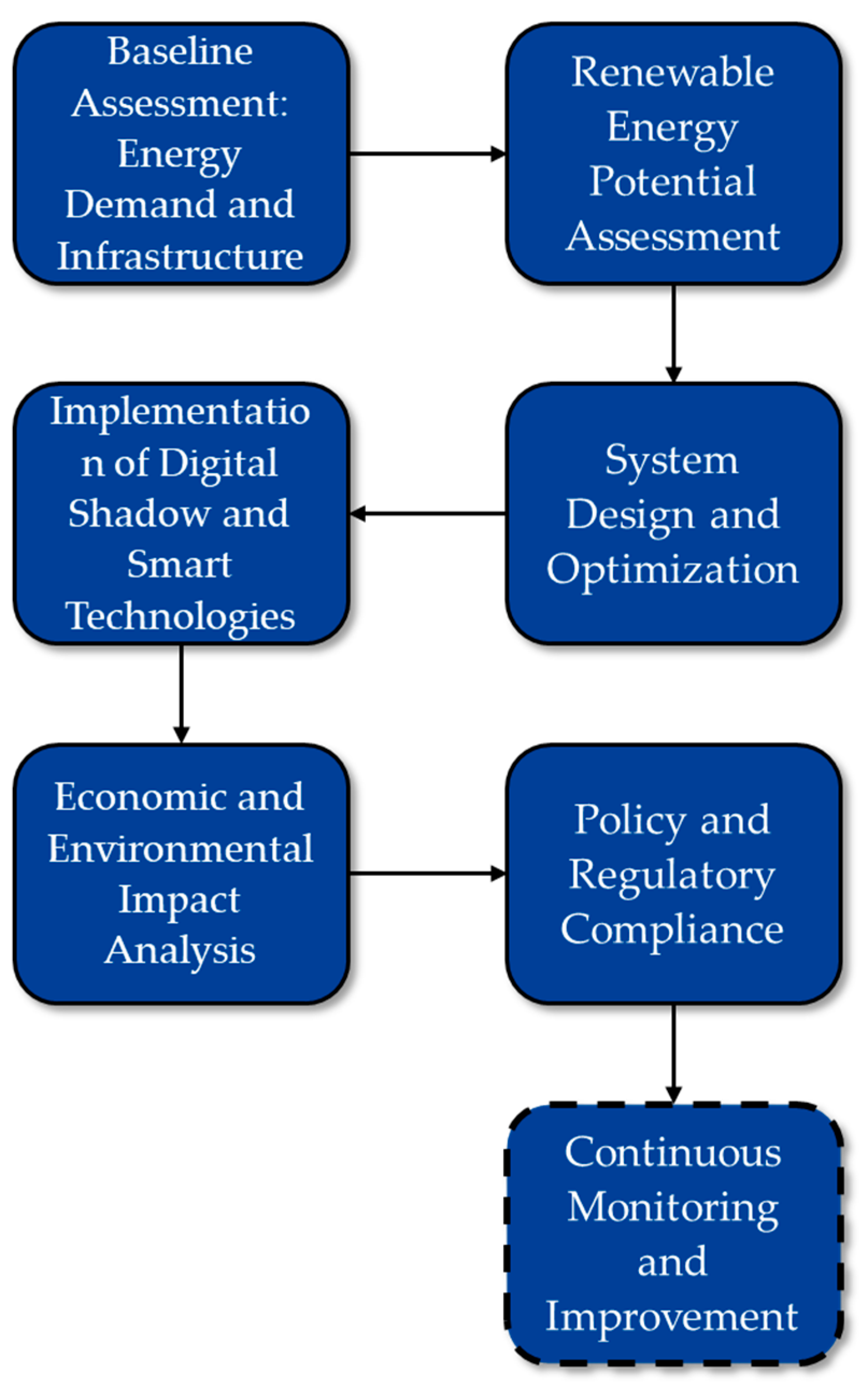

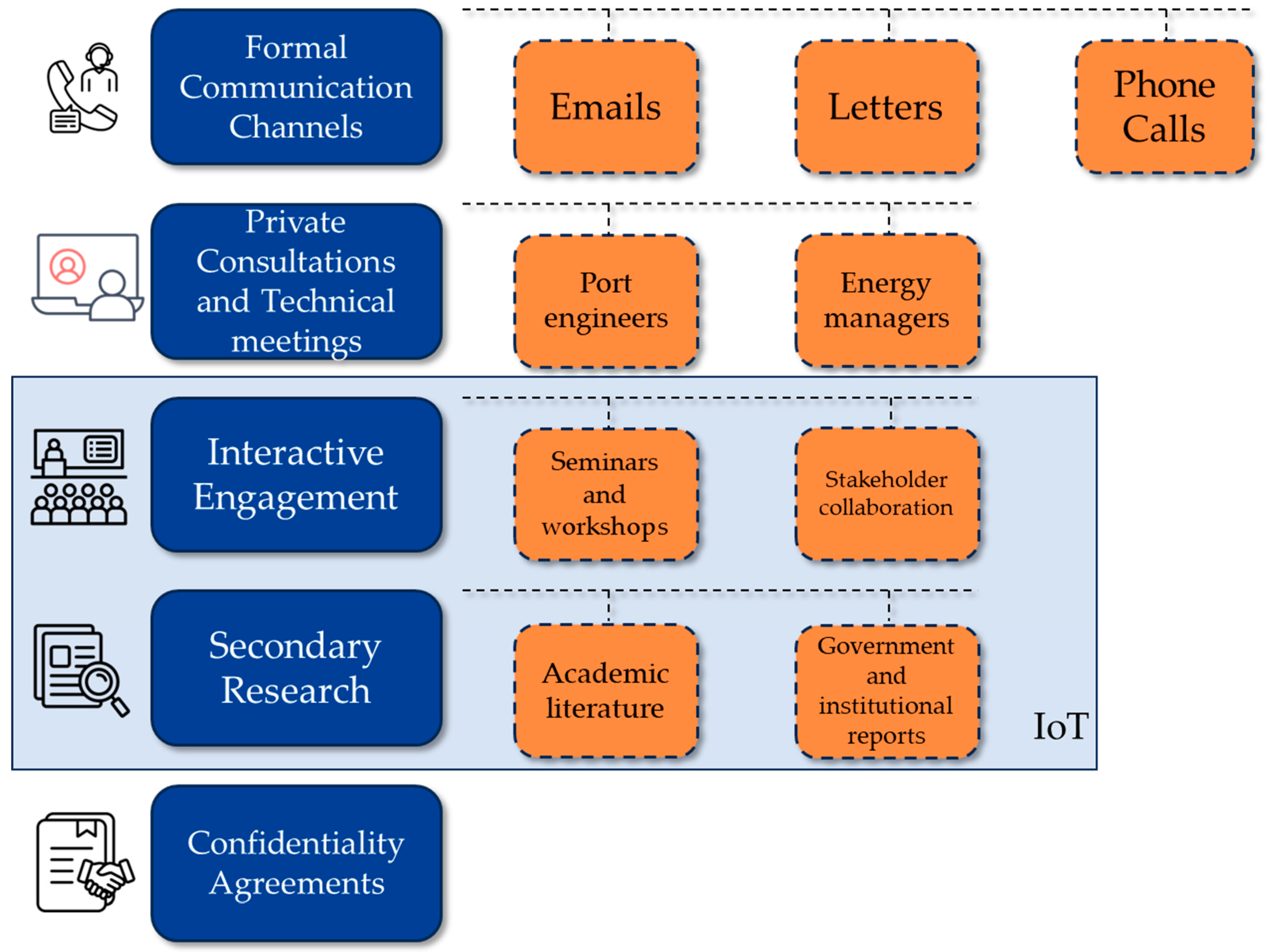
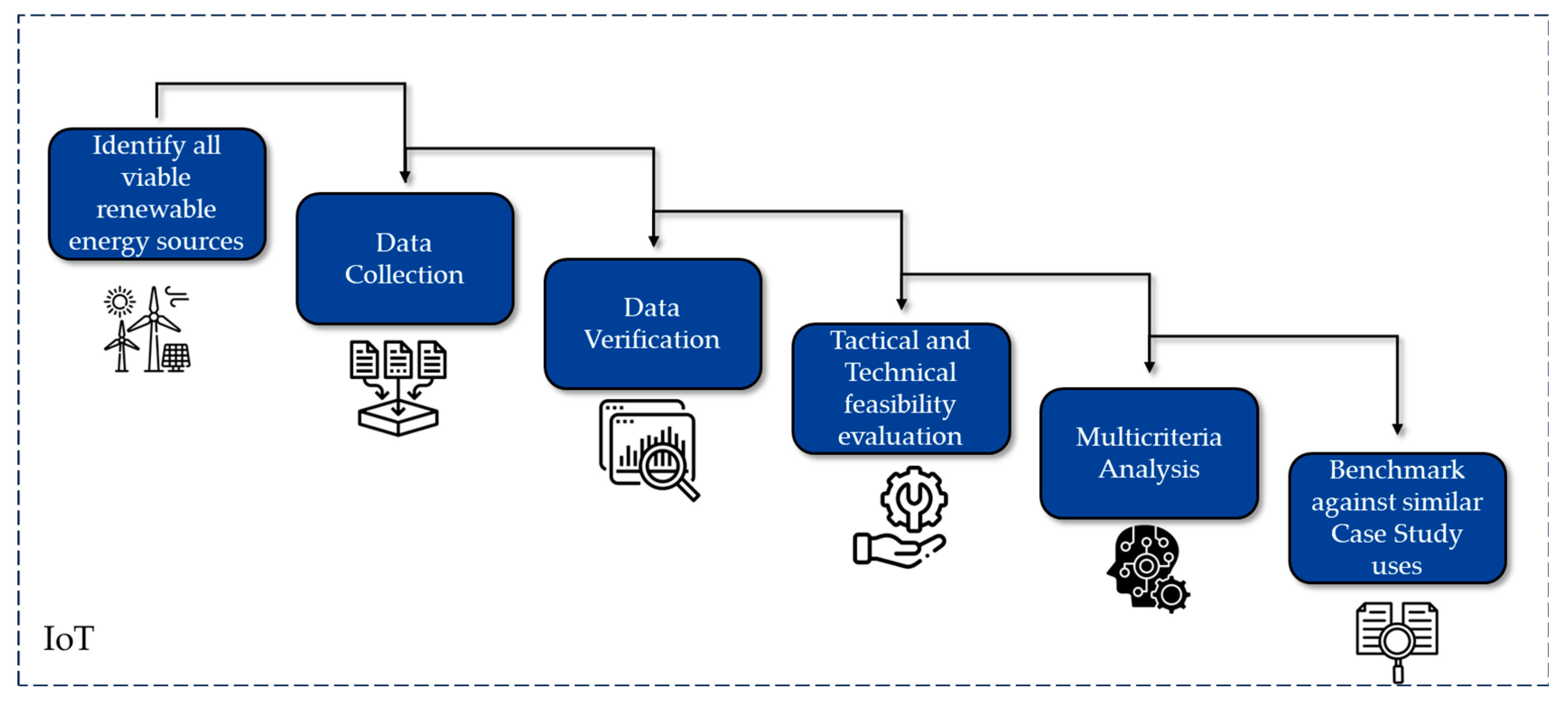
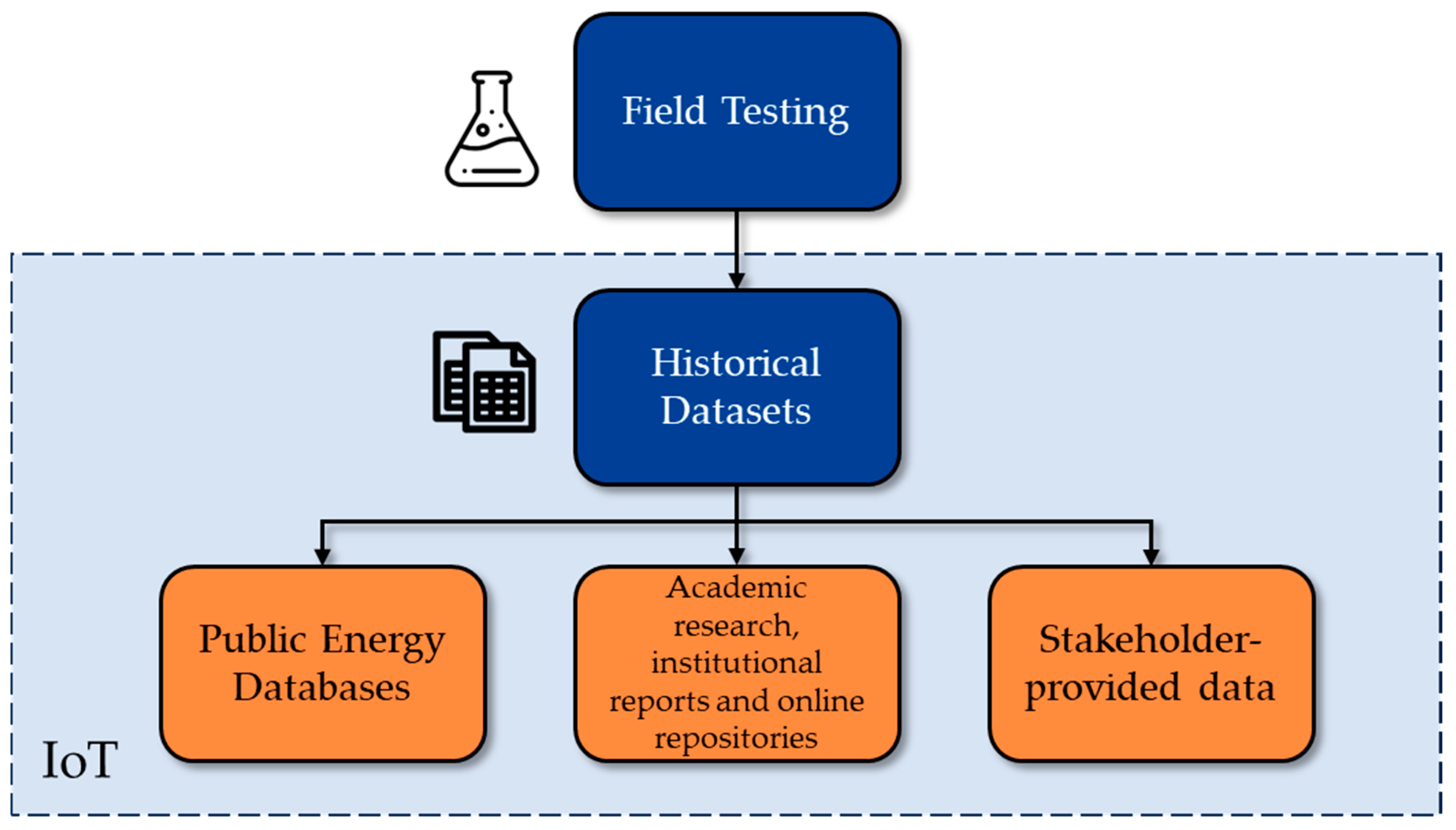
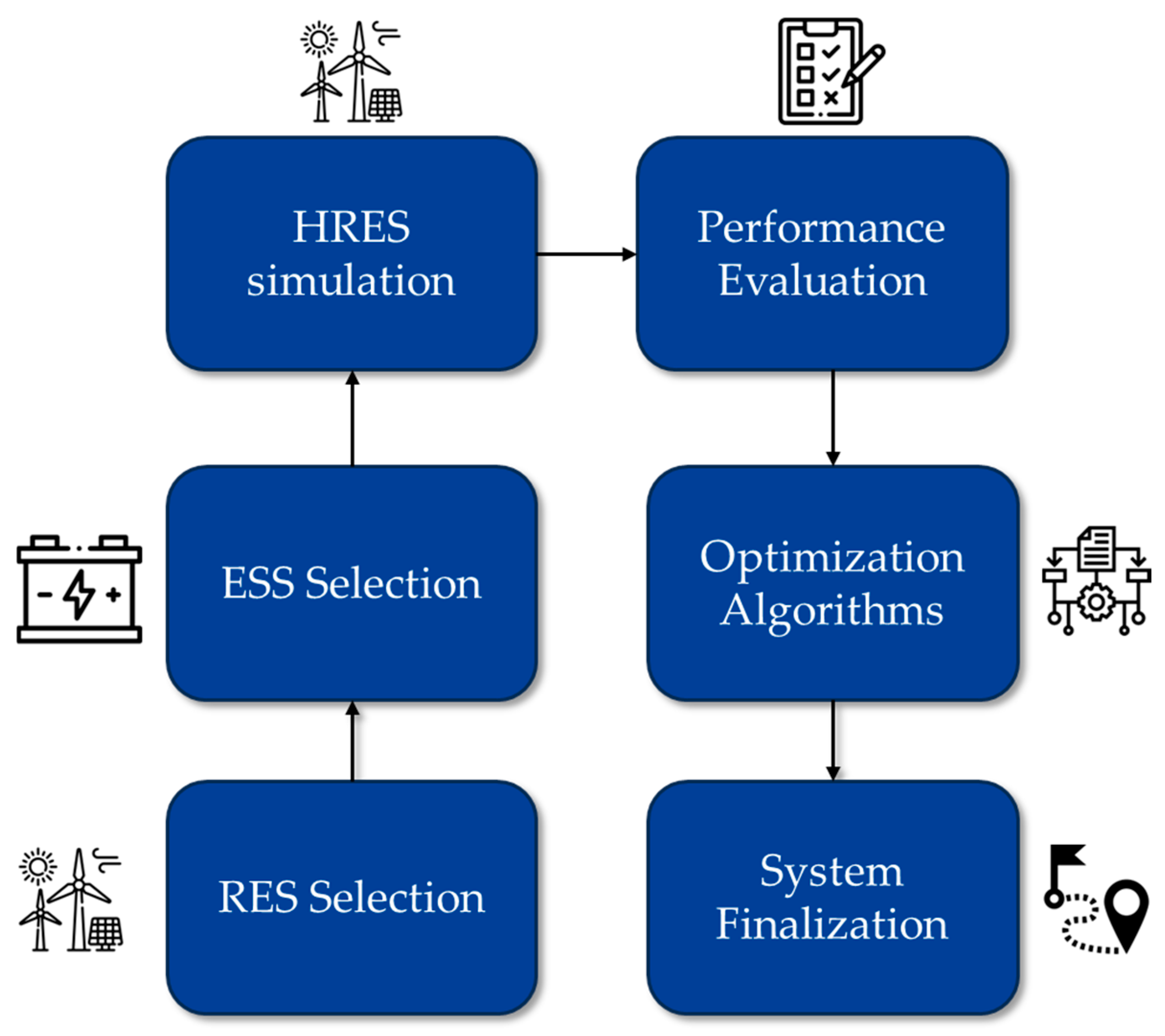
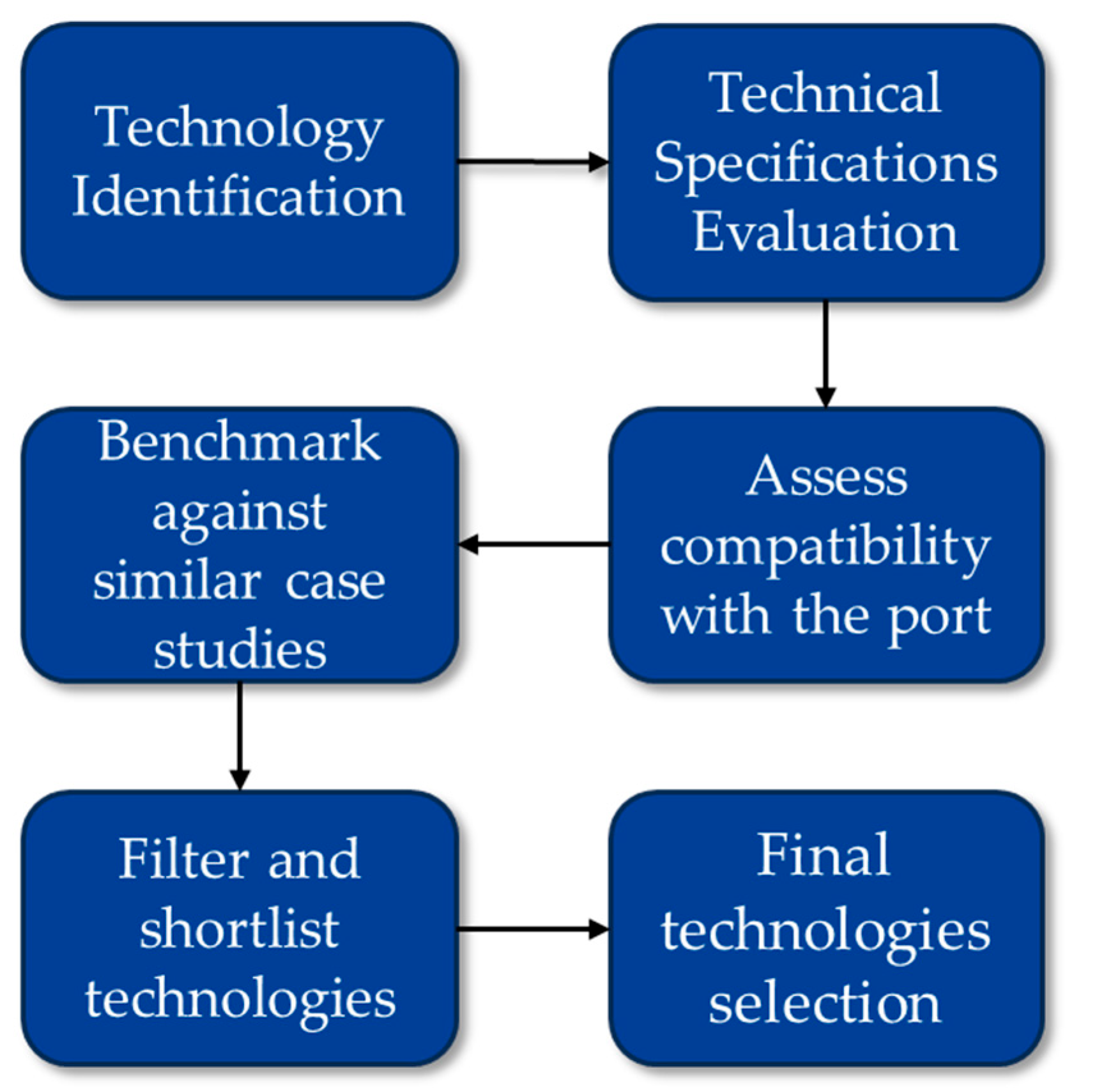
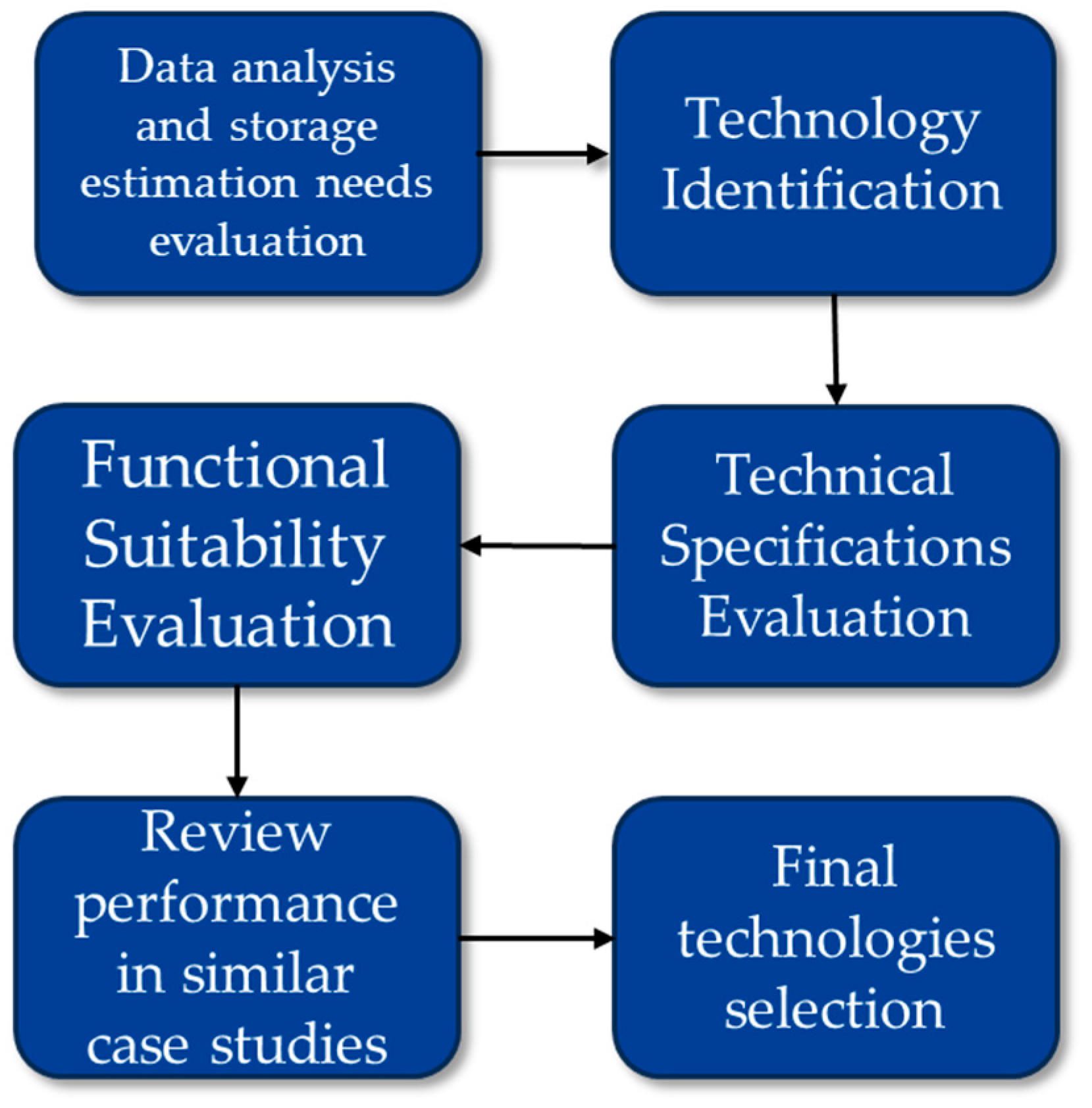
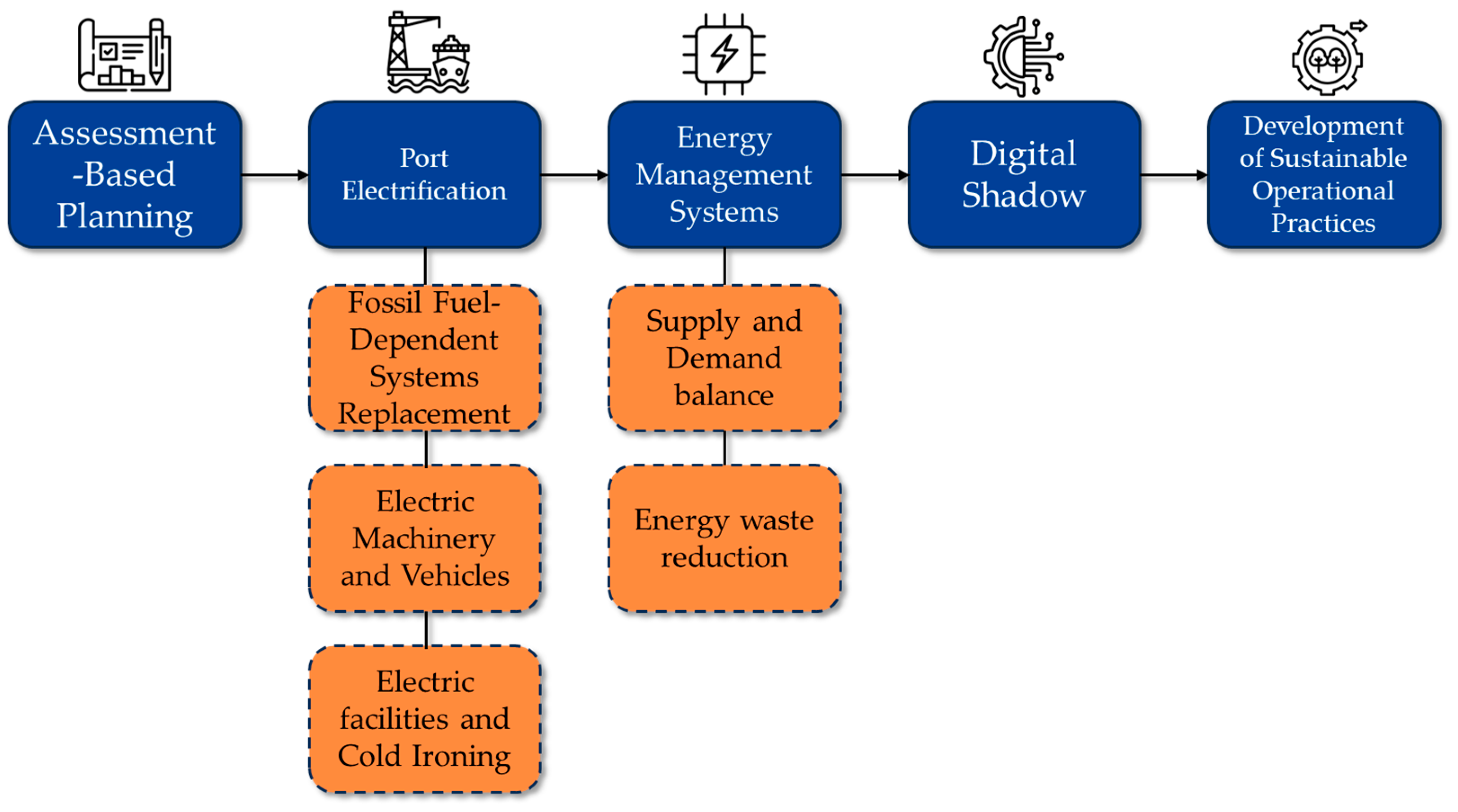
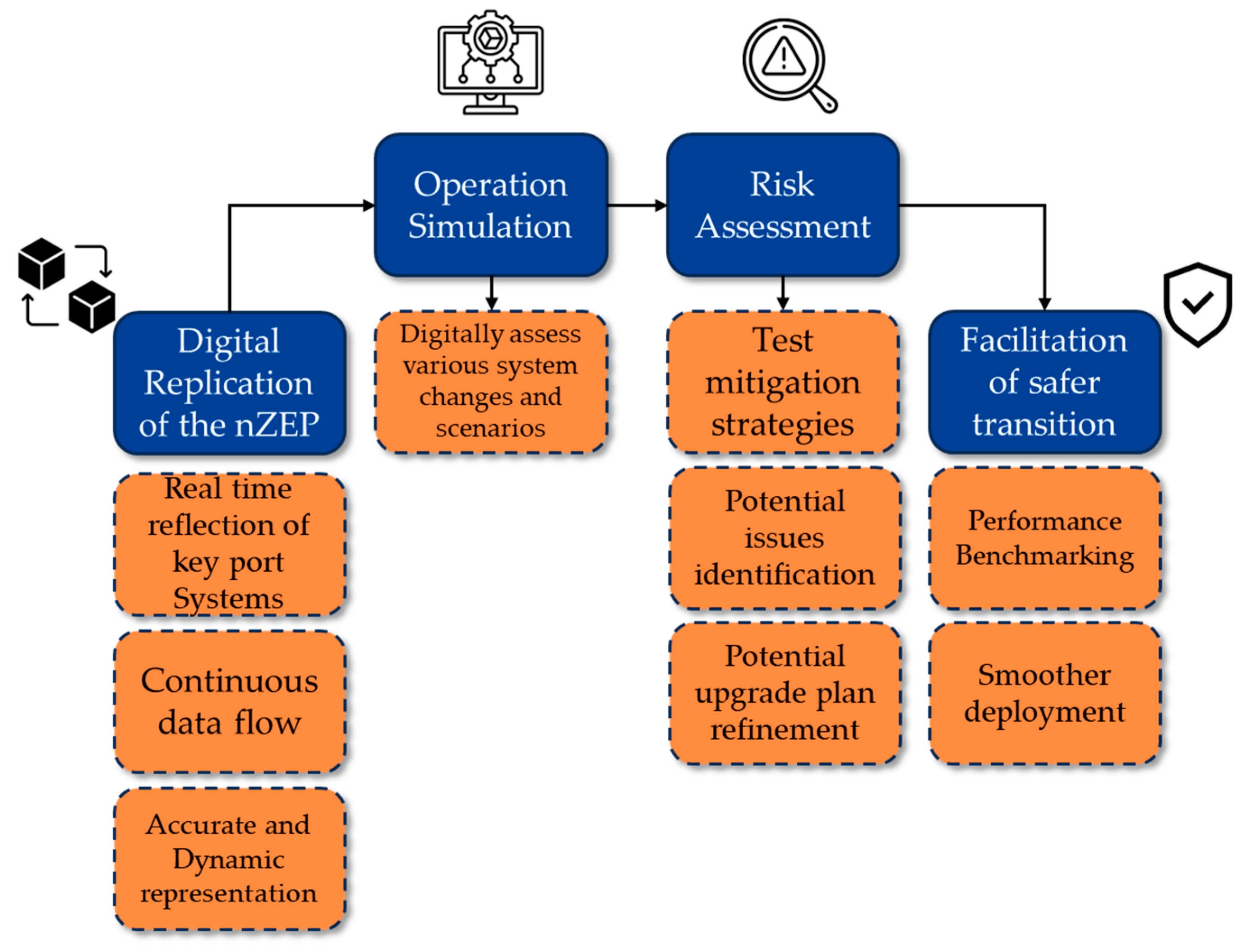
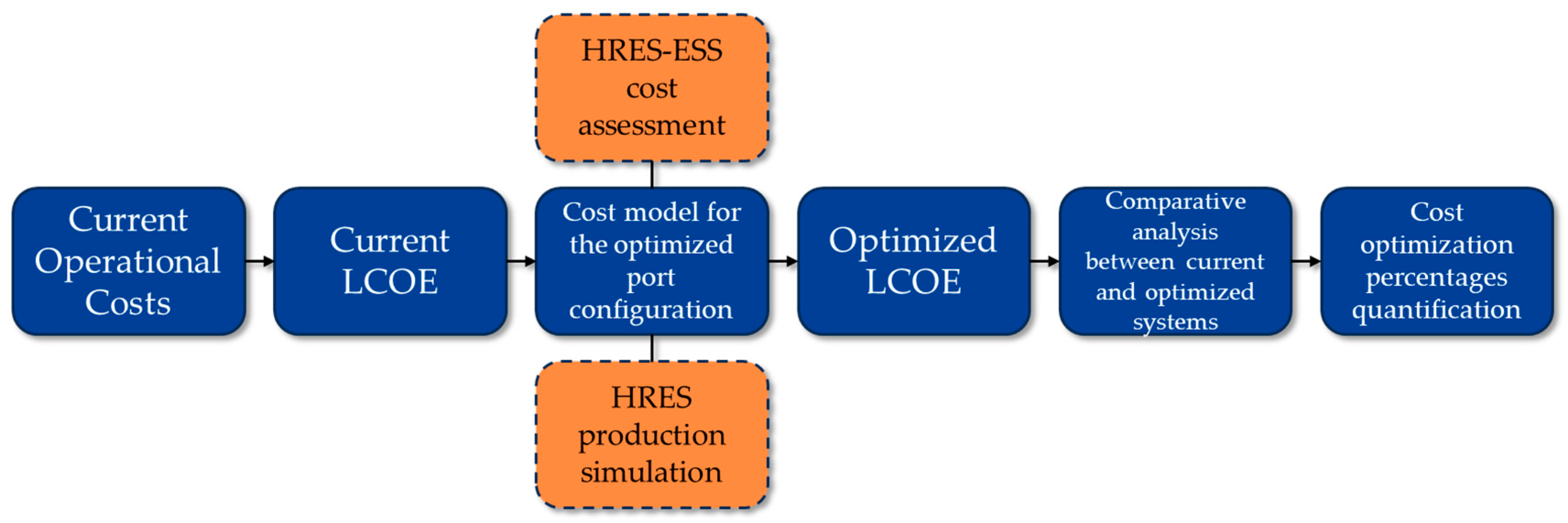
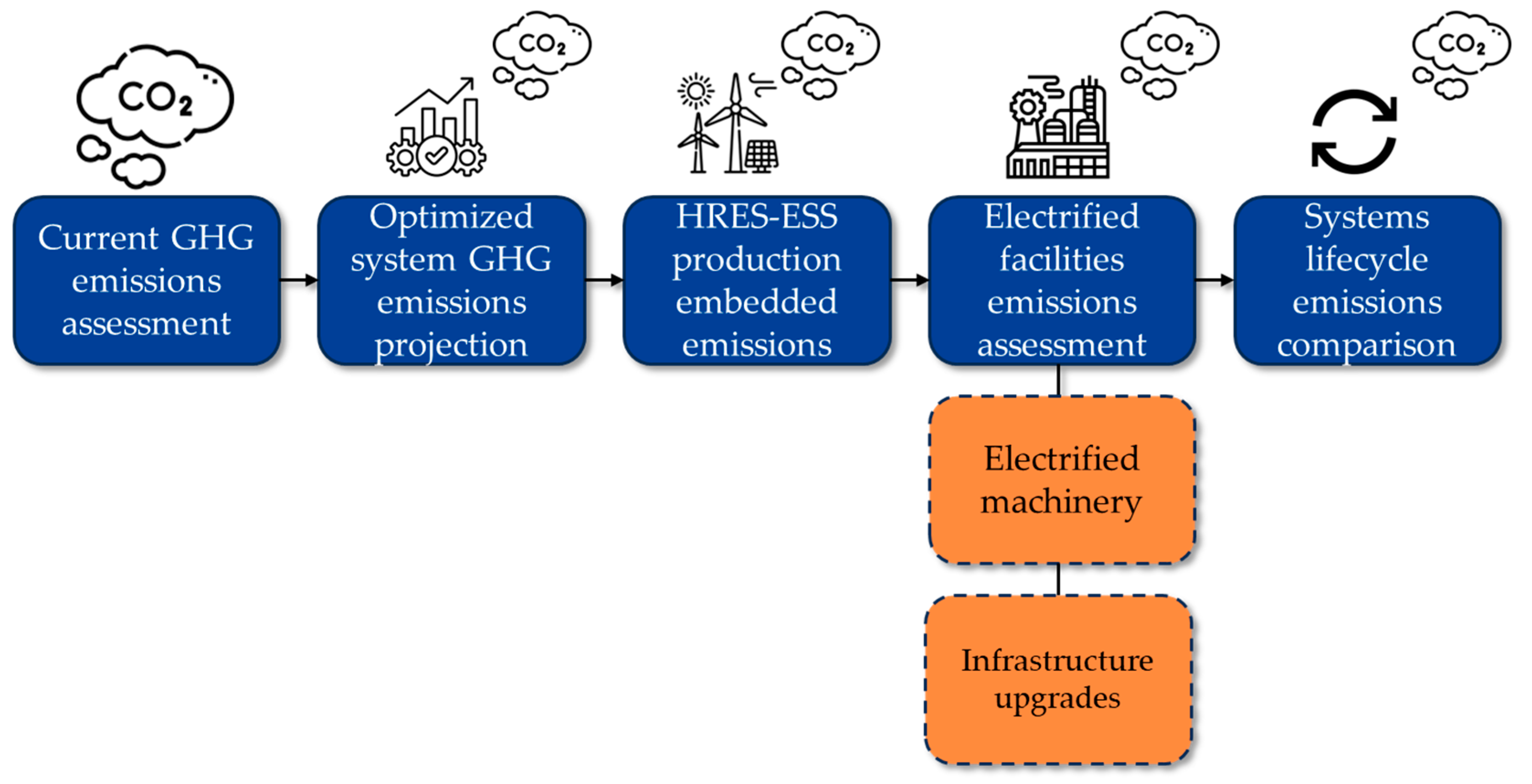

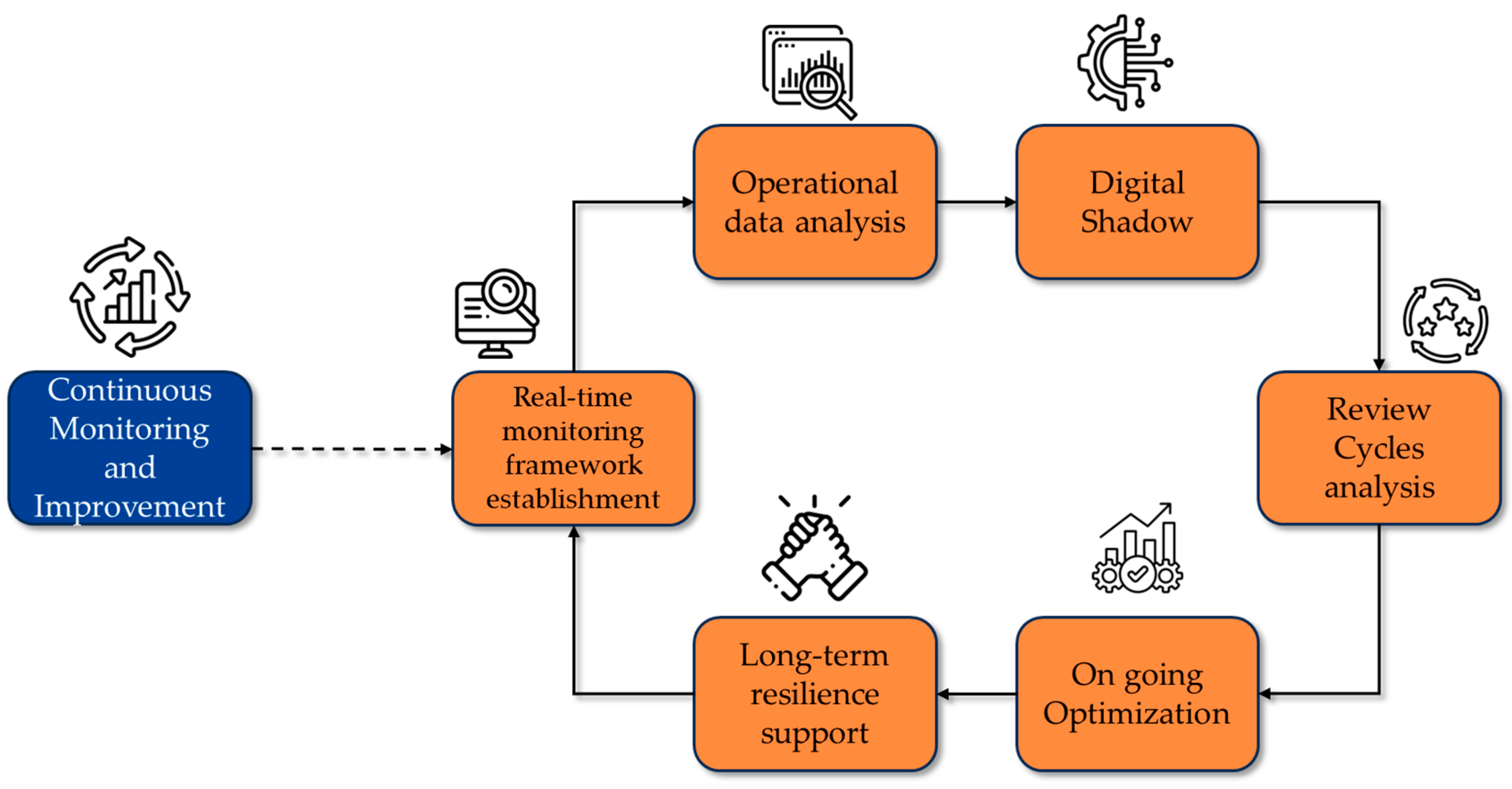
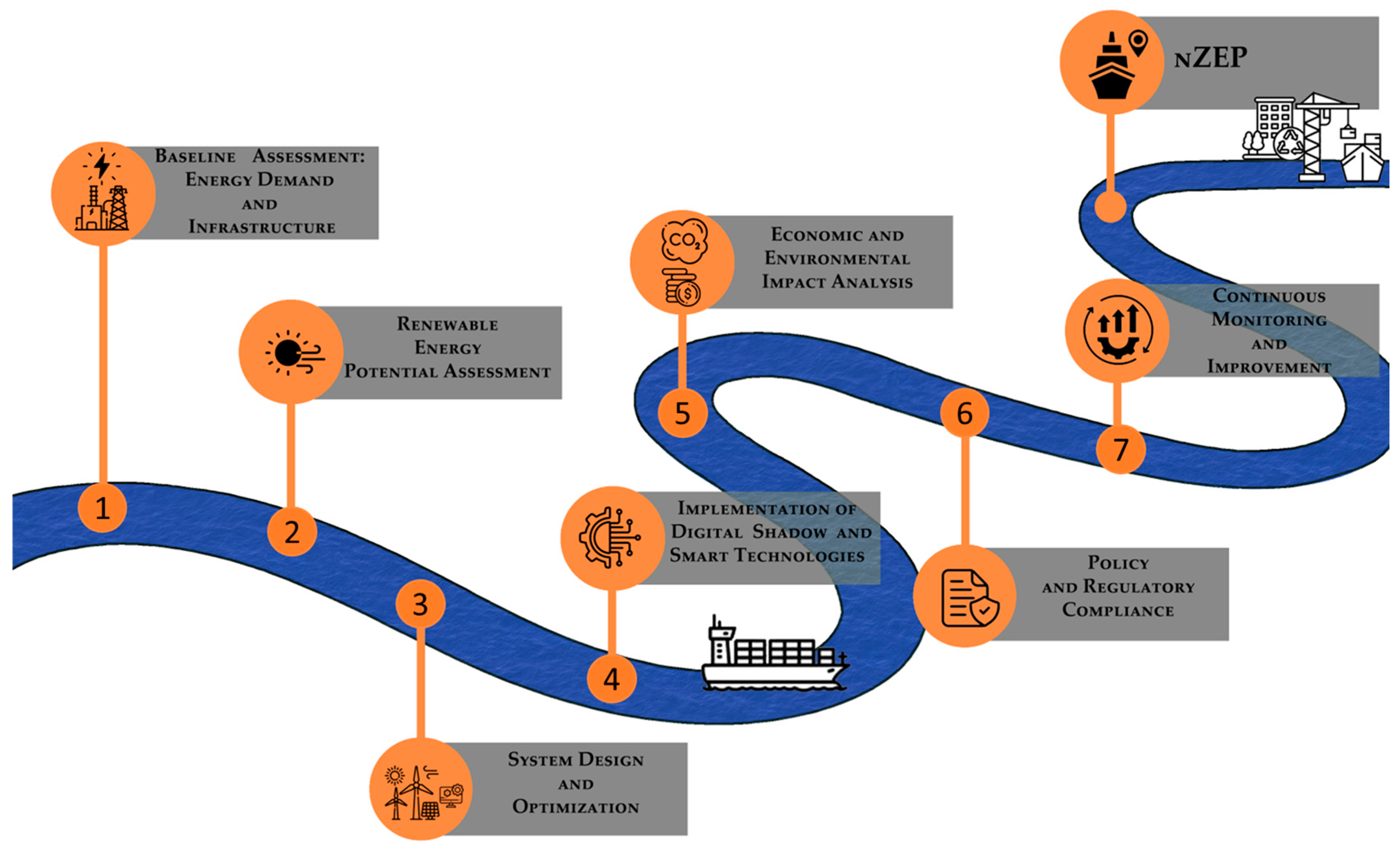

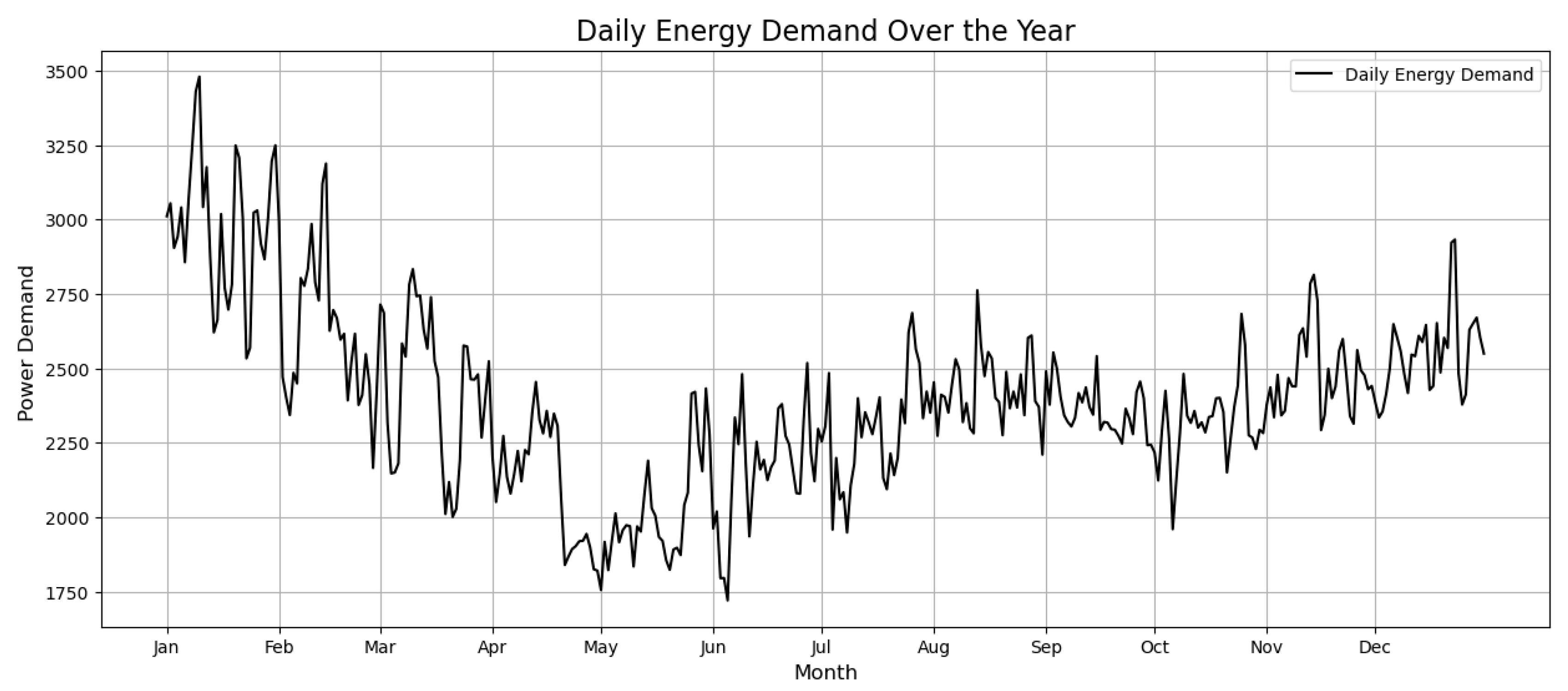


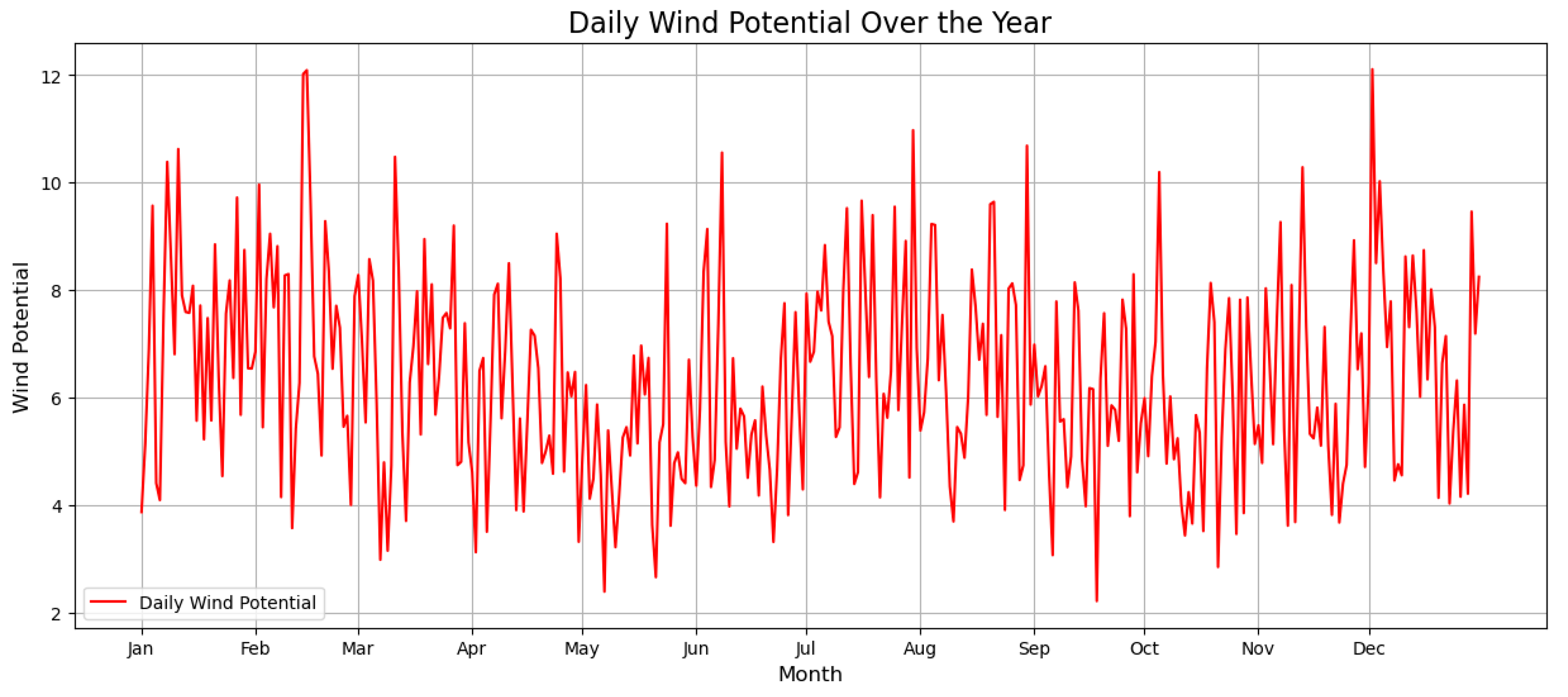
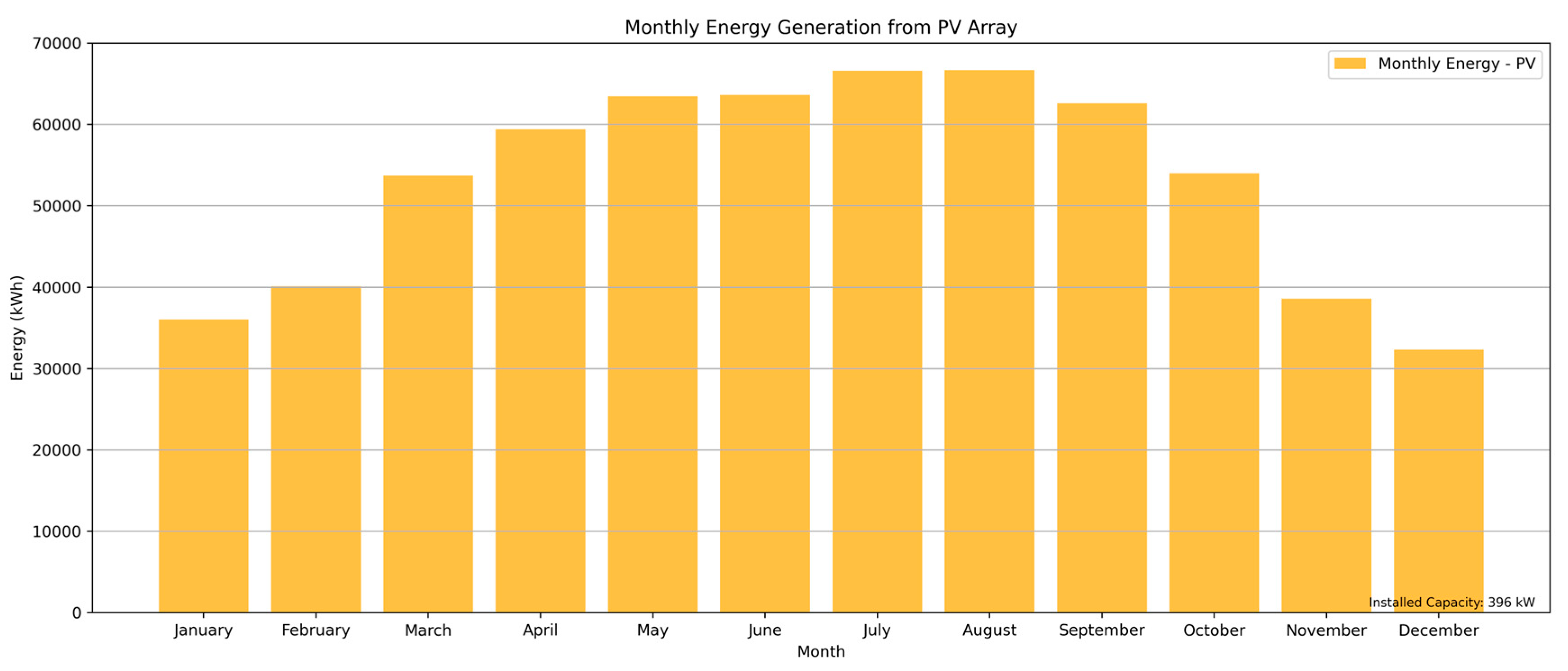

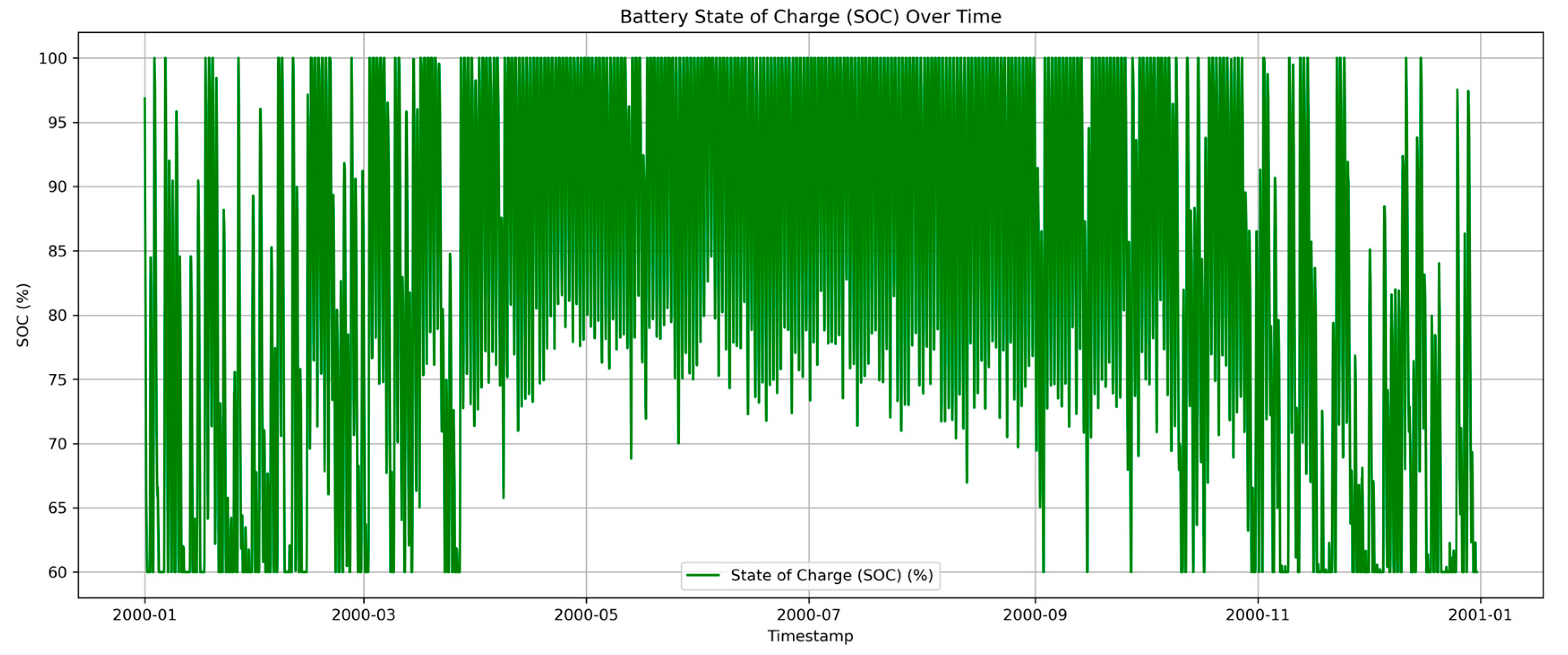
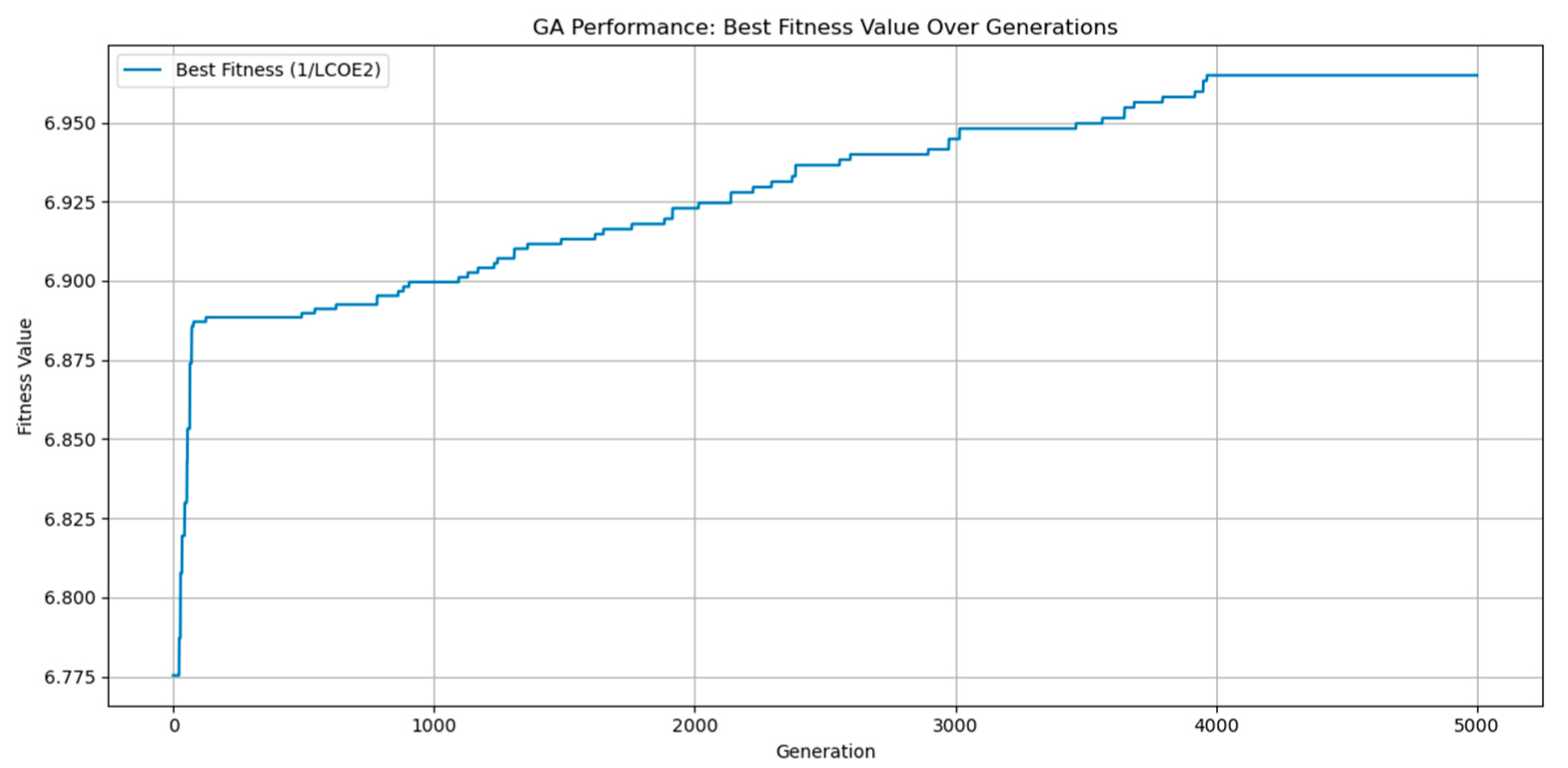

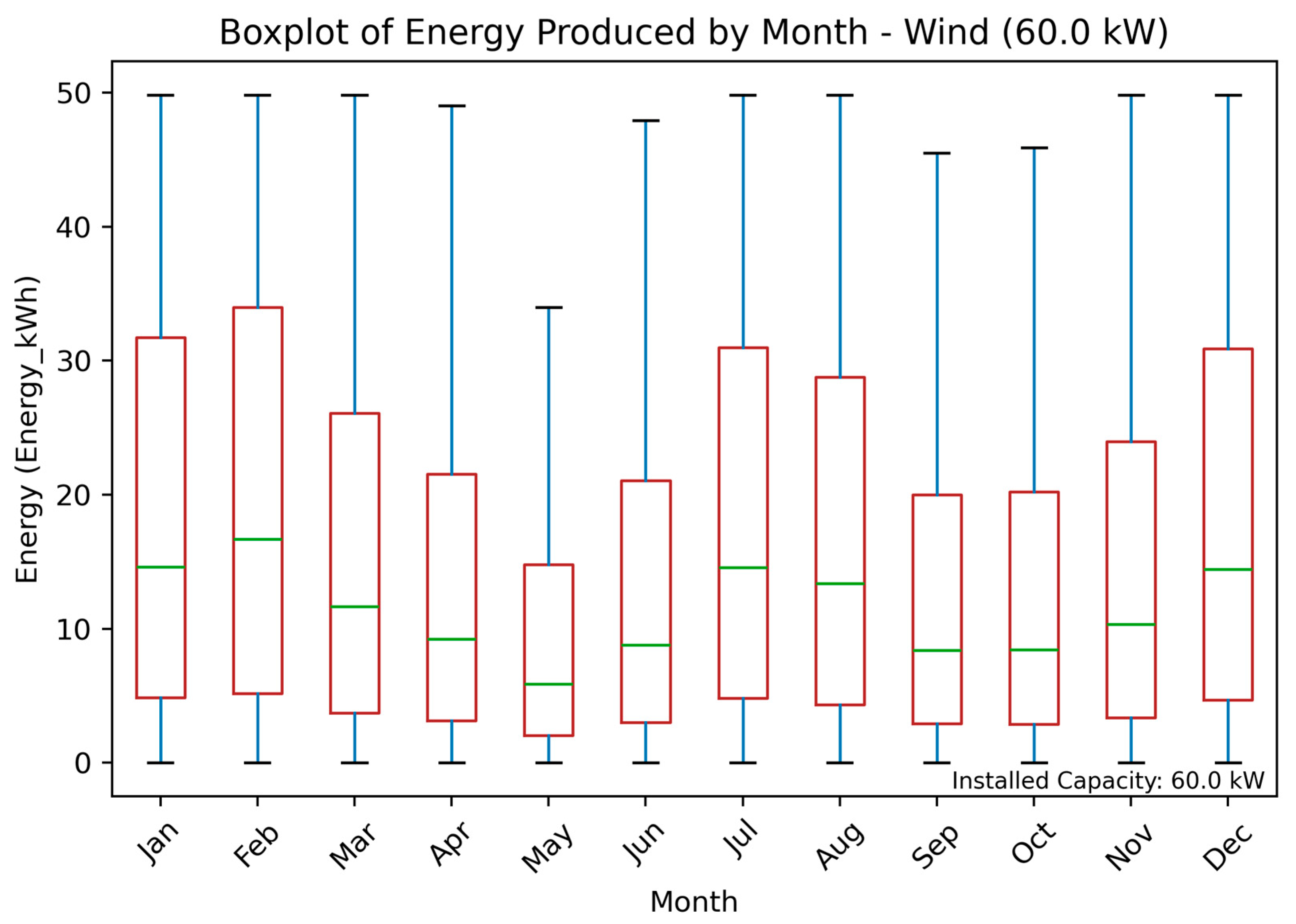
| Ref. | Focus Area | Summary | Our Novel Contribution |
|---|---|---|---|
| [22] | Green Energy | Evaluates seven green energy strategies using novel impact and sustainability ratios. | Applies theoretical metrics to real port infrastructure, integrating simulation, IoT monitoring, and transition pathways for nZEP. |
| [23] | Green Energy | Reviews energy sources and technologies for sustainable building energy use. | Bridges sustainability principles with port-specific implementation (digital shadows, smart systems, real-time energy management). |
| [24] | Green Energy | Explores challenges and advancements in microgrid control architectures (inverter-based systems). | Extends microgrid control to a medium-scale port with real-time EMS, digital shadows, and RES/ESS integration. |
| [25] | Green Energy | Explores decentralized renewable energy systems for mitigating geopolitical conflicts and environmental degradation. | Translates decentralized green energy benefits to port operations via integrated RES, smart tech, digital monitoring, and stakeholder engagement. |
| [26] | Green Energy | Empirical evidence on fiscal decentralization’s influence on carbon emissions via renewable energy transition. | Demonstrates on-ground application of renewable transitions in port operations through localized assessment, coordination, and digital monitoring. |
| [27] | Green Energy | Proposes an integrated framework for hydrogen-assisted, fuel cell-based renewable energy applications. | Applies integrated design/simulation to a Mediterranean port with digital shadowing, real-time EMS, and stakeholder planning. |
| [28] | Carbon Neutralization | Explores carbon capture and storage (CCS) for CO2 emission mitigation. | Advances emission prevention at the source through integrated renewable generation, electrification, and smart load management in ports. |
| [29] | Carbon Neutralization | Quantifies renewable energy development’s impact on carbon emission intensity. | Applies renewables’ emissions-reducing potential to port microenvironments via real-time energy management, digital twins, and hybrid systems. |
| [30] | Carbon Neutralization | Evaluates cost-efficiency and emissions reduction potential of electricity generation technologies. | Extends comparative analysis to practical port context with integrated solar, wind, ESS, EMS, and digital shadowing. |
| [31] | Carbon Neutralization | Highlights MOF-based materials for effective carbon dioxide capture. | Explores MOF-based carbon capture within HRES, emphasizing impact on system efficiency and sustainability. |
| [41] | HRES | Optimizes hybrid renewable energy systems in seaports for cost efficiency, autonomy, and sustainability. | Combines HRES with smart EMS and ESS for real-time operational efficiency and carbon mitigation in smart port design. |
| [34] | HRES | Reviews advancements in hybrid renewable energy systems focusing on sizing, optimization, and control. | Introduces an empirically validated optimization framework for real-time port operations, demonstrating applied benefits of HRES, ESS, and EMS. |
| [35] | HRES | Presents a framework for identifying factors influencing renewable energy production using the SCOR model. | Expands operational focus by embedding advanced control and real-time optimization in a live hybrid renewable energy system for ports. |
| [37] | ESS | Reviews historical evolution and operating principles of energy storage systems for renewable energy integration. | Implements and evaluates ESS in a real-time hybrid renewable energy setup, demonstrating practical performance in port applications. |
| [42] | ESS | Reviews optimization techniques for energy management in microgrids (forecasting, scheduling, control). | Demonstrates real-world implementation of a unified EMS combining renewable integration, storage optimization, and dispatch in a port. |
| [43] | ESS | Proposes a game-theoretic energy storage sharing framework for prosumers. | Implements an integrated EMS-ESS framework managing storage for cost optimization and system-wide stability in a port. |
| [44] | Port Infrastructure | Reviews modern seaport electrification: RES integration, digitalization, energy-efficient infrastructure. | Applies a real-time optimization framework uniting HRES, ESS, and EMS to quantify techno-economic benefits in port operations. |
| [45] | Port Infrastructure | Analyzes energy efficiency practices in European ports through green port principles. | Quantifies impact of integrated HRES, ESS, and EMS on reducing energy costs and emissions, offering a scalable framework for green ports. |
| [53] | Port Infrastructure | Techno-economic analysis of hydrogen-based HRES and cold ironing for port decarbonization. | Implements a broader HRES optimization framework with real-time EMS and ESS, demonstrating flexibility in managing energy flows. |
| [46] | Port Infrastructure | Develops a climate risk assessment framework for port infrastructure adaptation. | Complements climate adaptation by integrating HRES, ESS, and EMS to create resilient, low-emission port energy systems. |
| [51] | nZEP | Reviews renewable energy solutions and smart systems for nearly zero-energy ports. | Operationalizes nZEP via GA-based optimization of HRES, ESS, and EMS for real port conditions, achieving cost/emission reductions. |
| [54] | nZEP | Evaluates cold ironing and hydrogen-based renewable systems for zero-emission, energy-autonomous ports. | Extends hydrogen-based autonomy by incorporating HRES-ESS-EMS optimization for flexible, cost-effective, real-time energy management. |
| [55] | nZEP | Compares HRES and storage configurations in grid-connected ports, analyzing dispatch strategies. | Enhances dispatch strategy evaluation via GA-driven framework dynamically optimizing HRES, ESS, and EMS under real constraints. |
| [52] | nZEP | Methodological framework for transforming Rethymno port into an nZEP. | Expands discussion by applying real-time HRES and EMS to optimize operational efficiency under dynamic demand, going beyond static modeling. |
| Technologies | Electricity Grid | PV | WT | LAB ESS |
|---|---|---|---|---|
| CF factor 2 | 2250 | 37.3 | 40 | 24,250 1 |
| Technology | Installed Capacity |
|---|---|
| PV (kW) | 396 |
| WT (kW) | 60 |
| NPC (EUR) | 4,070,367 |
| LCOE (EUR/kWh) | 0.360 |
| Total grid supplied energy (kWh/year) | 874,623.636 |
| NPC (EUR) | 1,867,930 |
| Initial capital (EUR) | 1,407,888 |
| LCOE (EUR/kWh) | 0.1424 |
| Total grid supplied energy (kWh/year) | 98,850 |
| Total RES supplied energy (kWh/year) | 774,713 |
| Payback period (years) | 5.041 |
Disclaimer/Publisher’s Note: The statements, opinions and data contained in all publications are solely those of the individual author(s) and contributor(s) and not of MDPI and/or the editor(s). MDPI and/or the editor(s) disclaim responsibility for any injury to people or property resulting from any ideas, methods, instructions or products referred to in the content. |
© 2025 by the authors. Licensee MDPI, Basel, Switzerland. This article is an open access article distributed under the terms and conditions of the Creative Commons Attribution (CC BY) license (https://creativecommons.org/licenses/by/4.0/).
Share and Cite
Cholidis, D.; Sifakis, N.; Chachalis, A.; Savvakis, N.; Arampatzis, G. Energy Transition Framework for Nearly Zero-Energy Ports: HRES Planning, Storage Integration, and Implementation Roadmap. Sustainability 2025, 17, 5971. https://doi.org/10.3390/su17135971
Cholidis D, Sifakis N, Chachalis A, Savvakis N, Arampatzis G. Energy Transition Framework for Nearly Zero-Energy Ports: HRES Planning, Storage Integration, and Implementation Roadmap. Sustainability. 2025; 17(13):5971. https://doi.org/10.3390/su17135971
Chicago/Turabian StyleCholidis, Dimitrios, Nikolaos Sifakis, Alexandros Chachalis, Nikolaos Savvakis, and George Arampatzis. 2025. "Energy Transition Framework for Nearly Zero-Energy Ports: HRES Planning, Storage Integration, and Implementation Roadmap" Sustainability 17, no. 13: 5971. https://doi.org/10.3390/su17135971
APA StyleCholidis, D., Sifakis, N., Chachalis, A., Savvakis, N., & Arampatzis, G. (2025). Energy Transition Framework for Nearly Zero-Energy Ports: HRES Planning, Storage Integration, and Implementation Roadmap. Sustainability, 17(13), 5971. https://doi.org/10.3390/su17135971








